ABA League: Cedevita Olimpija Tops KK Split in Dramatic Finish at Gripe 83:79
February 12, 2022 - KK Split missed a chance for another sensation in the ABA league, losing to Cedevita Olimpija at home.
There was plenty of frustration visible in Split during the last minutes of the 20th round of the ABA League. 70:70 with two minutes to go looked like a pretty good base for yet another surprise for the Yellows after the 89:77 against Igokea in their last ABA league home game 2 weeks earlier. It would have been an important win after the disappointing display against Cibona in Zagreb on Monday (84:65).
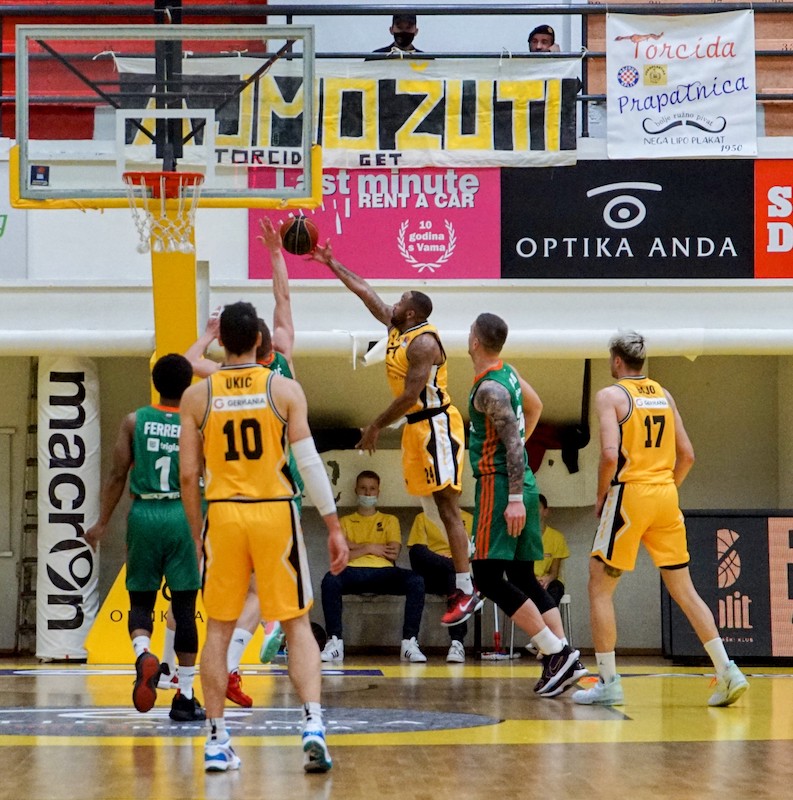
The Slovenian national forward Edo Murić did show his qualities with two back-to-back three-pointers under pressure to silence the home crowd of 600. His 17 points in total allowed the team from Ljublijana to increase their winning streak to 4 wins in EuroCup and ABA League.

Guest coach Jurica Golemac was already aware of the recent success in Split against Igokea and was especially impressed with the close game against Red Star. Last night's game being their 4th win in 8 days made the victory even more outstanding and showed how well he was able to prepare his team for the Yellows.
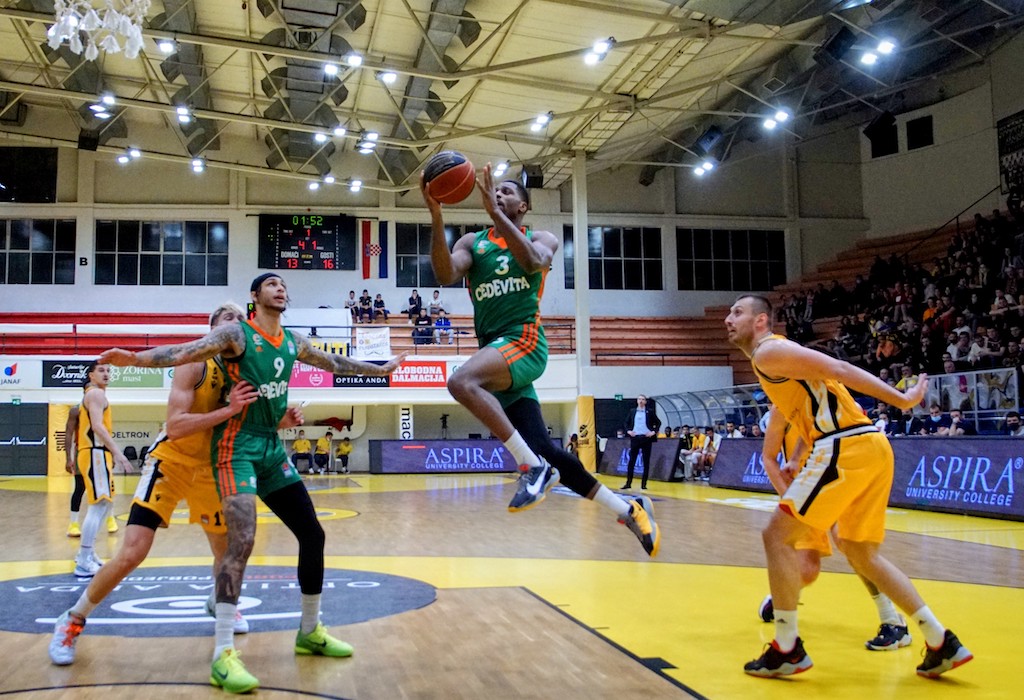
KK Split remains tied with Krka for last place (3 wins each) and will need a miracle to catch up with the next teams from Borac and Zadar (6 wins each) while Olimpija manages to hold on to fourth place which would give them home-court for advantage in the first round of playoffs.
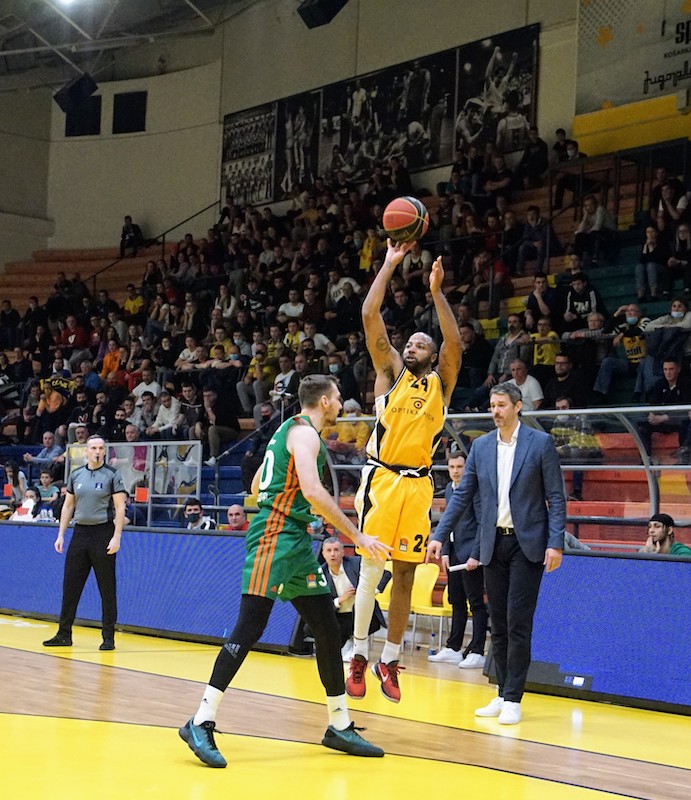
Split's top-scoring players were Karlo Žganec (17 points, 7 rebounds) and Shannon Shorter (19 points, 5 rebounds, 7 assists).

Referees: Sašo Petek, Marko Juras, Marko Pecelj
Final result (79:83) by quarters: 21:22, 13:14, 22:21, 23:26
Box score: https://www.aba-liga.com/match/134/21/1/Overview/q1/1/home/split-cedevita-olimpija/
To read more about sport in Croatia, follow TCN’s dedicated page.
American Aircraft Carrier 'Harry S. Truman' Arrived at Split
February 11, 2022 - After receiving approval from the Croatian government under the maritime code, the American aircraft carrier 'USS Harry S. Truman' returned to the port of Split after just over 6 years as part of a routine visit for logistical replenishment and for the crew to rest.
After it was escorted from Rogoznica, the American aircraft carrier USS Harry S. Truman (CVN-75) sailed in front of the port of Split. Before it, as reported by Slobodna Dalmacija, the Norwegian frigate HNoMS "Fridtjof Nansen" (F310) sailed.
The Nimitz-class aircraft carrier, already in Split at the beginning of December 2015, is anchored in the Brač Channel, where it will remain until February 15.
The vessel is over 330 meters long, 74 meters high, and 40 meters wide, and can develop a speed of 30 knots. It is powered by two nuclear reactors and four steam turbines and is armed with two Mk 57 Mod3 Sea Sparrow anti-aircraft and anti-missile weapon systems, two RIM-116 Rolling Airframe Missile, and three Phalanx CIWS for close combat.
The government allowed the USS Harry S. Truman nuclear-powered aircraft carrier to sail into Croatian waters and stay in Split port from 11 to 15 February, with Defence Minister Mario Banožić underlining the good cooperation with the United States allies and partners. Without recharging it can sail three million miles, almost 25 years.
"It's a routine visit for logistical replenishment and for the crew to rest," he said at a cabinet meeting on Thursday.
''It will be an opportunity for talks with our American allies, partners, for strong support which will be reaffirmed also in that way'', he said.
The cooperation with the US Navy is intensive, Banožić said, recalling that its ships are overhauled in Croatia's Viktor Lenac shipyard.
The US Embassy sent a note to the Croatian Foreign Ministry requesting permission for the USS Harry S. Truman to enter Croatian waters. The government granted it under the Maritime Code.
According to the US Naval Institute, the American aircraft carrier Harry S. Truman was scheduled to cross the Suez Canal last year, but due to rising tensions between Russia and Ukraine, it was ordered to remain in the Mediterranean Sea.
For more, check out our politics section.
2022 Valentine's Day in Split: Romantic Menus and More
February 11, 2022 - Have you planned your 2022 Valentine's Day in Split yet? This should help.
Valentine's Day is around the corner, and whether you're the type of partner that plans ahead or fails to realize your significant other's favorite holiday is only three days away - we have you covered.
Split restaurants are just beginning to reveal romantic menus and Valentine-themed events for this weekend with a selection of special offers fit for all lovers.
Zinfandel Food & Wine Bar
Zinfandel Food & Wine Bar has announced a special fish, meat, and vegetarian menu on Valentine's Day. Enjoy live music and 3-course menus for 230 kuna per person.
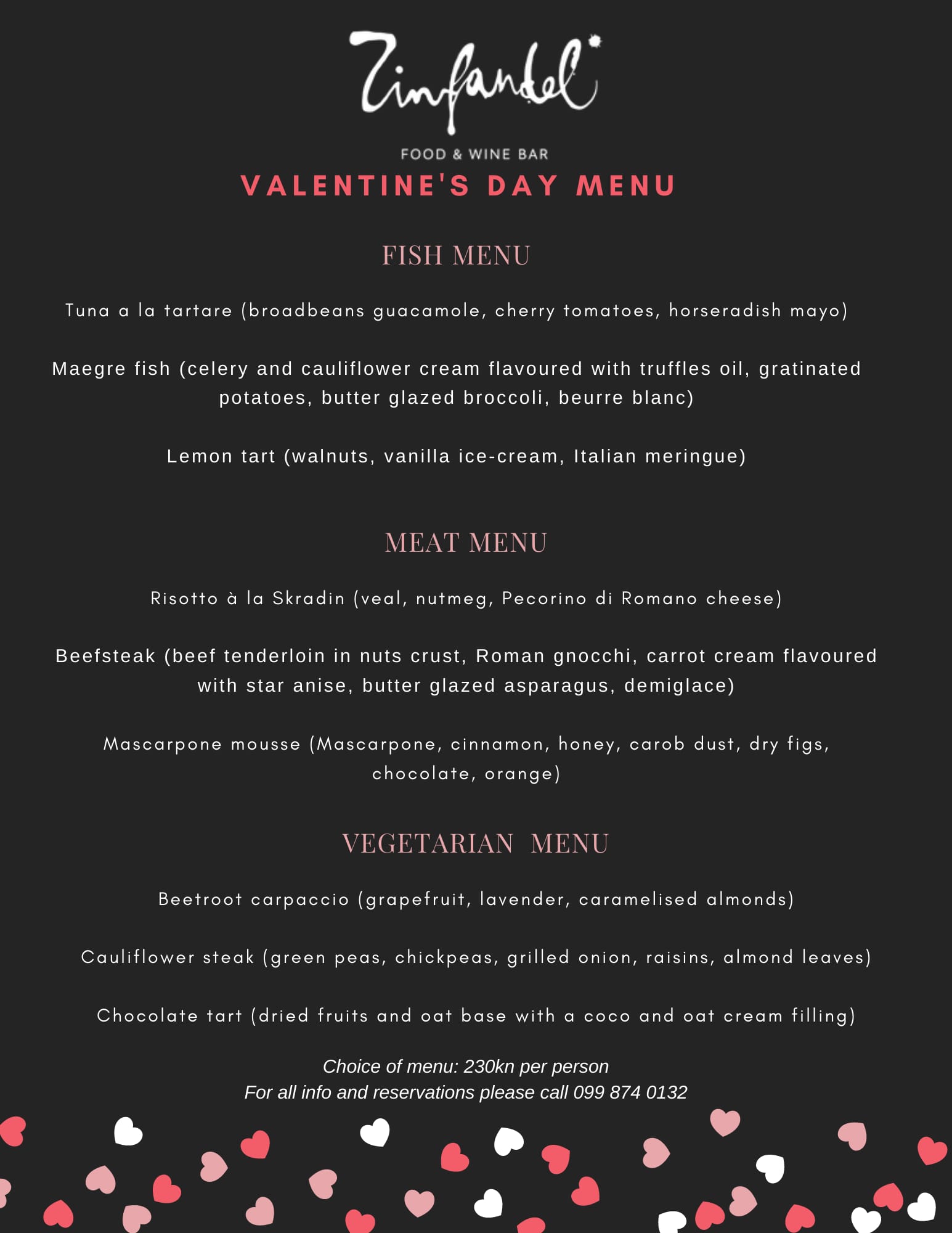
Reservations: 099 874 0132
Brasserie on 7
Brasserie on 7 reopens February 12, just in time for a fab Valentine's Day brunch! Check out the menu below at 200 kuna for two people. 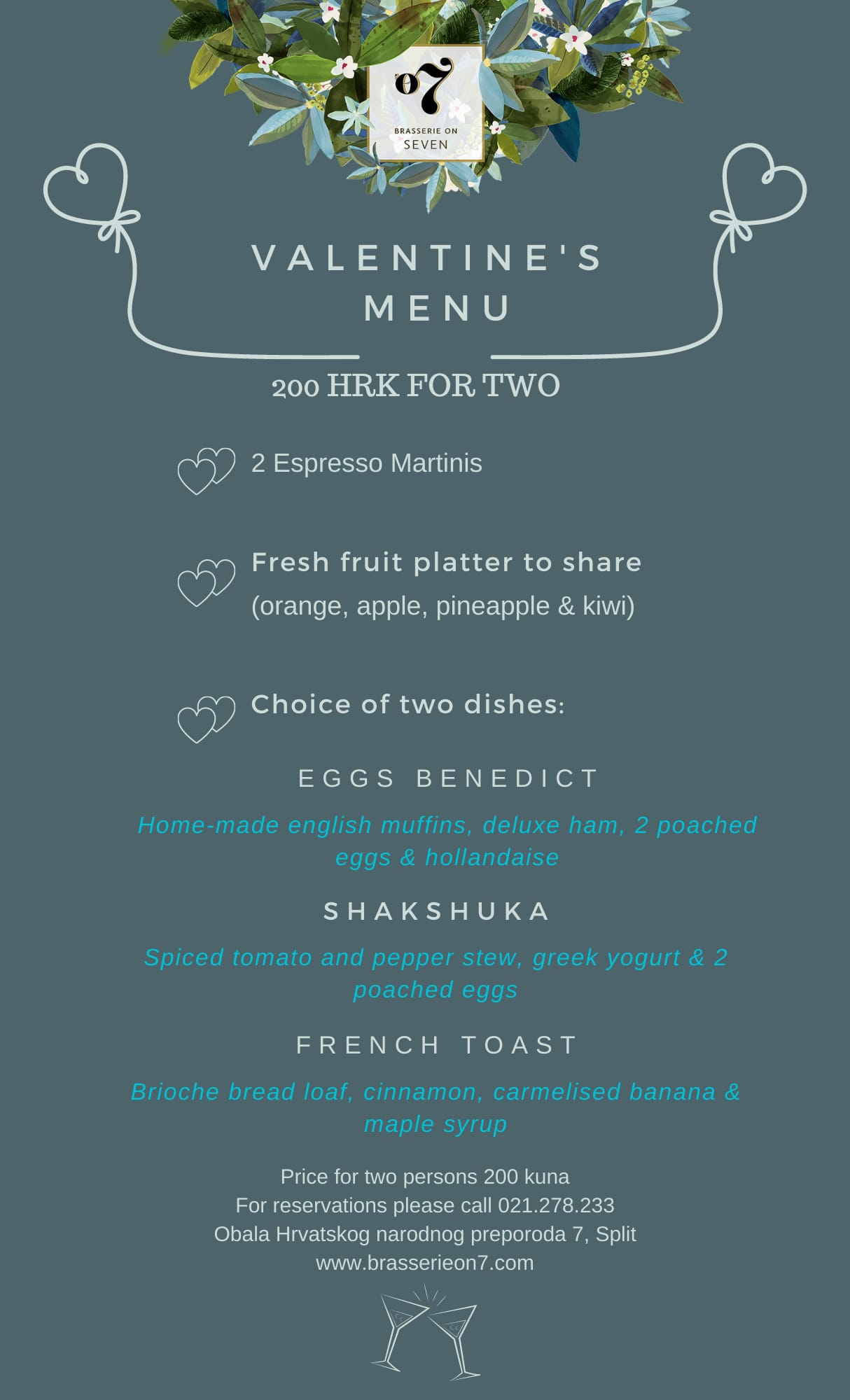
Mazzgoon
Mazzgoon is preparing a secret dinner on Saturday, February 12, and Monday, February 14, with an aphrodisiac menu and DJ!
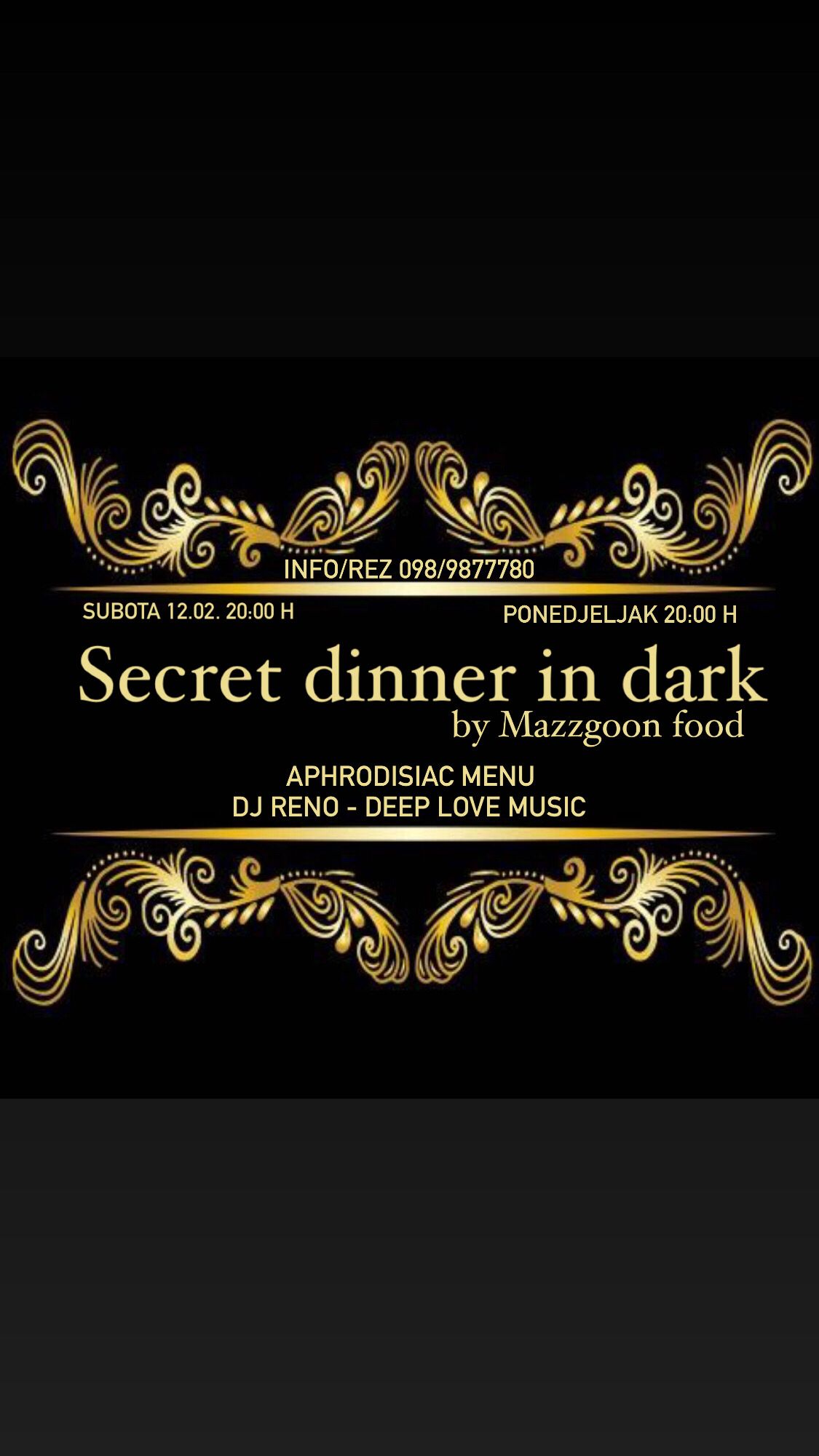
Baraka
Want to hear live music? Head to Baraka on Monday for an Elvis Presley and Chuck Berry tribute band! 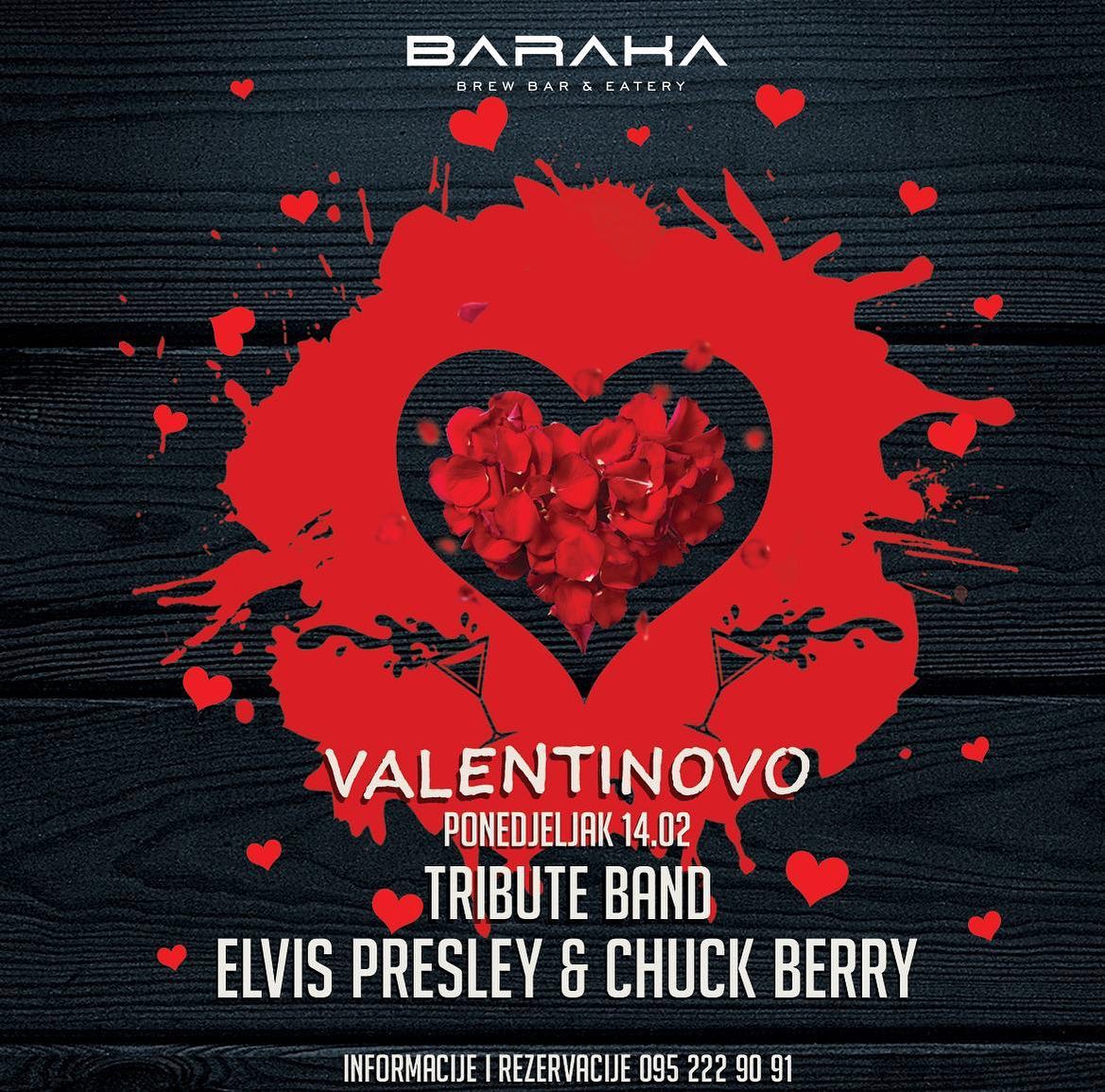
Kavana Central
Kavana Central at Heritage Hotel Santa Lucia is offering two 4-course menus (fish and meat) for 290 kuna.
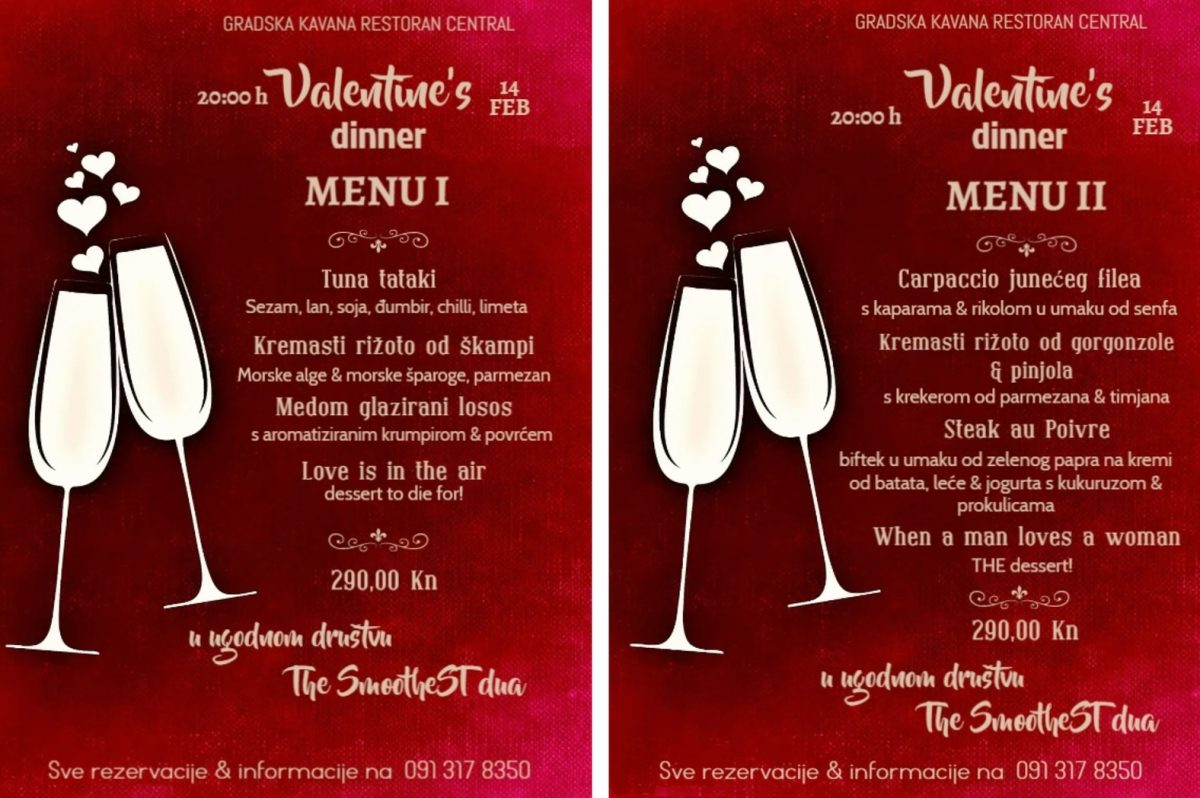
Reservations: 091-317-8350
Allora Restaurant
"Spend Love Day with your loved one at Allora Restaurant with romantic music and dinner courses.
We have prepared two menus for you:
FISH:
- Greetings from the kitchen
- Shrimp tartare
- Crispy octopus
- White fish fillets
- Dessert
MEAT:
- Greetings from the kitchen
- Ramsteak carpaccio
- Arancini strogano
- French Rack
- Dessert
If you want to escape from the hectic everyday life and spend a weekend at Ora Hotel Split with someone you love or just come for dinner, there are various possibilities.
For all information and reservations, contact us by phone 021 / 778-708 or by email at This email address is being protected from spambots. You need JavaScript enabled to view it.."
Perivoj
Perivoj announced their Valentine's Day couples: pork & steak and mullet & hake!
"We dimmed the lights, lit up the garden, played light music, and found the perfect pair in the selected wines for each course.
It's up to you to find your partner and choose your menu! We will start the celebration on Friday, February 11, and end on Monday, Valentine's Day!" said Perivoj.
For all reservations, email This email address is being protected from spambots. You need JavaScript enabled to view it.
For more, check out our lifestyle section.
New Netflix Crime Film with Leighton Meester Set Almost Entirely in Split
February 10, 2022 - Split city center and Diocletian's Palace will serve as main locations for the new Netflix crime film "The Weekend Away" starring actress and "Gossip Girl" star Leighton Meester. Its first trailer was released yesterday and the film will be available on the streaming platform on March 3.
''The Weekend Away'' is the new Netflix crime film and will premiere on the popular streaming platform on March 3 this year. The protagonist is none other than Leighton Meester, world-renowned for her leading role in the youth series ''Gossip Girl'', where she played Blair Waldorf.
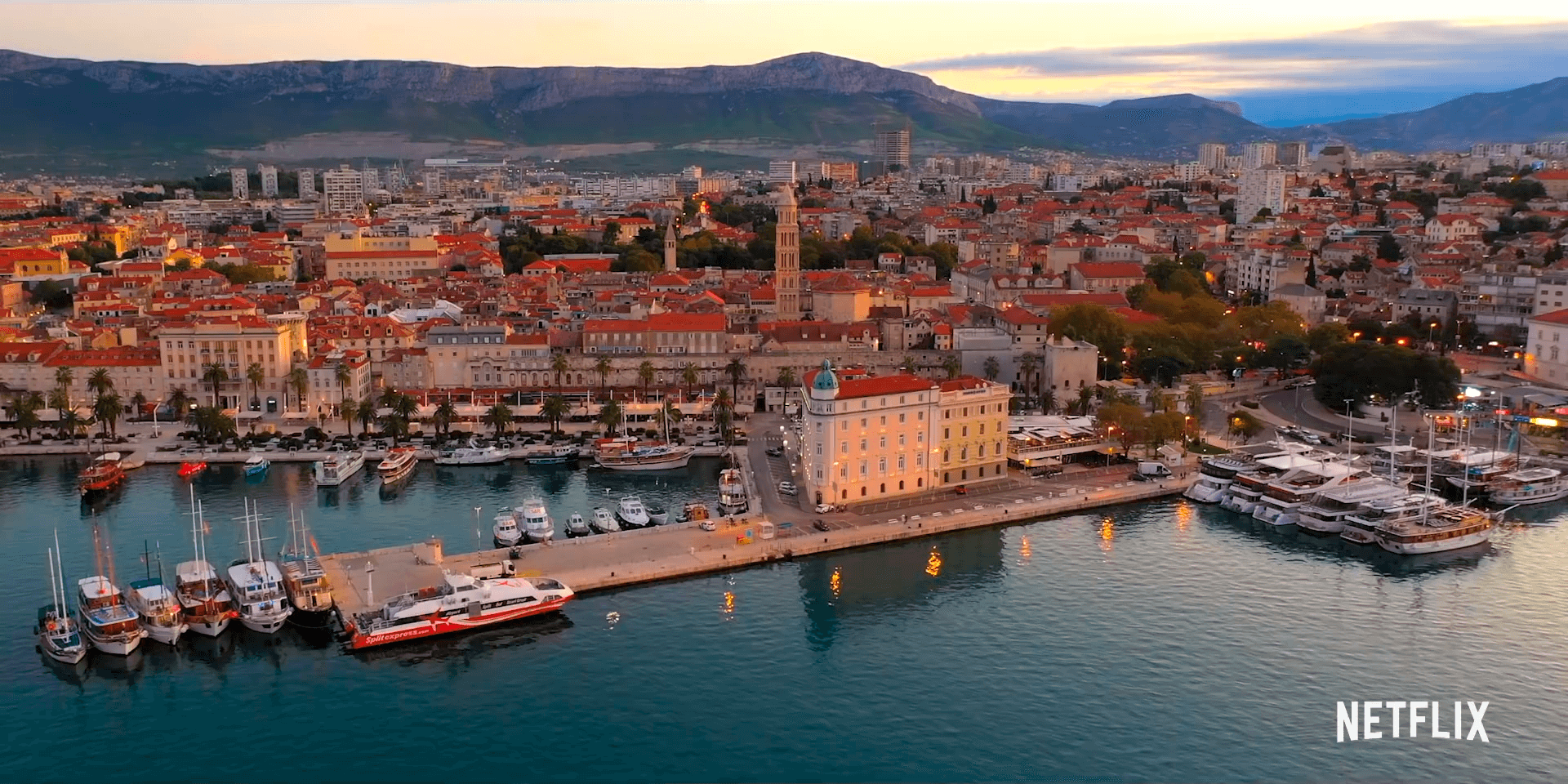
Netflix/Screenshot
Meester began her acting career at a very young age, appearing in guest roles on well-known series such as ''Law and Order'', ''24'', ''Entourage'', or ''House'' until reaching the top of the fame in 2007 in ''Gossip Girl''. Along the way, she has also appeared in romantic movies and comedies. Now, the American actress joins a new project with a more serious facet.
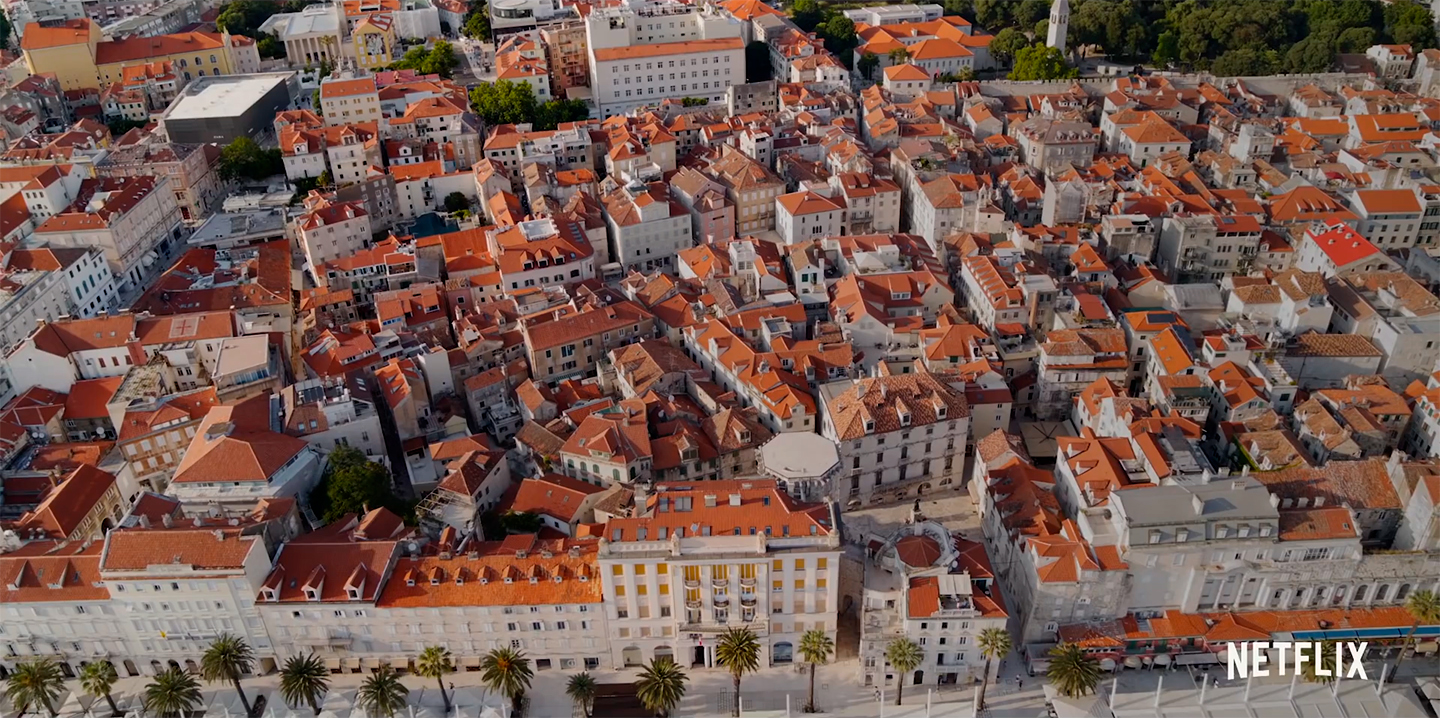
Netflix/Screenshot
The movie follows two best friends, Beth and Kate, who plan a weekend getaway to Croatia to escape the problems of their everyday lives. But things take a turn for the worse when Kate ends up dead. With eyes on Beth as the prime suspect, Beth must fight to prove her innocence. But along the way, she discovers a painful truth.

Netflix/Screenshot
The film is adapted from the best-selling novel titled the same name by Sarah Alderson. Alderson wrote the script with Kim Farrant as director. Ben Pugh, Charlie Morrison, and Erica Steinberg produced the film as part of their deal with Netflix. Joining Leighton Meester in her first major role in three years, are Christina Wolfe, Luke Norris, Ziad Bakri, and Croatian actor Amar Bukvić.
You can watch the official trailer, which was released yesterday, below:
For everything you need to know about filming in Croatia, in your language, be sure to check Total Croatia's page.
For more, check out our lifestyle section.
€35,000 Device Donated to Split Hospital's Neonatology Ward
ZAGREB, 8 Feb 2022 - A device for the inhalation of nitric oxide by premature babies was delivered to the neonatology ward in Split by local firefighters on Tuesday.
The device was donated to the hospital after a fund-raising event organised by the firefighters' organisation in the City of Split.
The head of the ward, Mirjana Bucat, sad at today's ceremony that the device would be be useful in the treatment of acute hypoxic pulmonary hypertension from which premature babies could suffer. She said that annually there were five to seven such cases in their hospital.
22nd Split Marathon Expects 3,000 Runners from 45 Countries
February 8, 2022 - The 22nd Split Marathon is around the corner, with the famous race returning to its standard term at the end of February
This is the largest multidisciplinary event in Split, on which the organization works 365 days a year. Therefore, everything is ready to begin, and only the final permits remain, issued according to the procedure 14 days before the event. It is worth emphasizing that the marathon is in line with the standards of major international races, which involve strict Covid protocol. This magnificent and essential event for the city of Split will take place on February 27.
Dalmacija Danas spoke to Split marathoner Kristijan Sindik, the race director and a member of the Split Marathon organization since 2014. Secondary connoisseurs of this sport will surely remember him for his unique endeavor when he ran seven marathons in seven days. And all to raise funds for the Department of Pediatric Oncology at the University Hospital Center Split, as he is also a former oncology patient.
"After last year's early fall edition, we are back to our standard term. The last Sunday in February is again a holiday of running in Split and this part of Europe. We are also returning to the record numbers from 2020, with about 3,000 participants from 45 countries worldwide. As of this year, the Split Marathon has entered the list of qualifying races for the Wanda Age Group World Championship, which is held in one of the six major world marathons (Tokyo, London, Boston, Berlin, Chicago, New York), which is certainly a big lure for runners from all over the world. We are also growing in terms of quality and speed, so we have secured several elite participants who come from Kenya, Ethiopia, Burundi, Rwanda, Morocco," Sindik said at the beginning of the conversation.
He pointed out the running track:
"It is one of the most beautiful in the world. We had to try and test dozens of other variants before that to get to it. It is a thorough job that requires time, dedication, and above all, education in terms of standards for organizing world marathons. The second guiding thought was to include all important city symbols such as Diocletian's Palace, the Riva, Poljud Stadium, Marjan, Grgur Ninski and to give all our guests a real sports and tourist postcard," he added.
Volunteers build the whole event.
"It is worked on diligently 365 days a year. The organizing committee consists of 14 members and is entirely voluntary. In the last days before the marathon, in operational terms, the number of volunteers exceeds 400. It is important to note that they are local, domestic citizens and our guests from various quarters. However, we will never refuse a couple of hands, so those still interested can still apply on our website," invites Sindik.
"The most difficult was in 2014, when you were not perceived properly by local institutions and when you are working on the legacy of something that was not good or was average. However, from the local race with a maximum of 150 participants, we managed to create a sports brand in the city, breaking stereotypes, raising public awareness, and convincing ourselves and then colleagues that we can make an event that Split, as a city of sports, deserves," says Sindik.
"February is a fickle month in terms of weather, and the only thing we can expect in that regard is - the unexpected. We had anthological snow, which falls once in 7-8 years in Split, and to fall exactly at the start of the marathon in 2018 is to be recounted. We also had a hurricane in 2019, when the President of the Republic of Slovenia, Mr. Borut Pahor, also participated. But we like to say that there is no bad time to run, but only well and poorly prepared organizers."
The Split Marathon is special to Sindik.
"A real marathon is run through the city. From one round, without repetition. So I like to tell my fellow citizens, in all sports, whether they run or do some other sport, to try to run a marathon at least once in their life. So let them decide what to do next. And try it in your city! Because if they manage to overcome the challenges of preparing for the marathon and fight and cross the finish line in the race, it can change lives forever. They will realize that they are ready for some things that they thought were impossible," he said.
Everyone wants to come to Split.
"The best confirmation of the success of the race is when runners return to it every year. Well-known marathoners are not immune to that either. Split is an attractive city, and the race is full of positive energy," concluded Sindik.
To read more about sport in Croatia, follow TCN’s dedicated page.
Nikola Kalinić Returns to Poljud: Former Croatia Striker Rejoins Hajduk from Serie A
February 7, 2022 - It was all but confirmed by Hajduk until late Sunday night - Nikola Kalinić is coming home!
"HNK Hajduk can confirm with great satisfaction that our first team will be stronger in the continuation of the season thanks to Nikola Kalinić, who is returning to Poljud after more than 12 years and taking over his number 9! Nikola arrives at Hajduk at the age of 34 as a free agent after terminating his contract with Hellas Verona," writes Hajduk to announce the news.
Kalinić is a child of Hajduk, passed all age categories of the Academy, and became one of its most recognizable products in the recent history of the Club. He played a total of 79 official matches for the Hajduk first team and scored 44 goals. In the 2007/2008 season, he scored 17 goals and scored 15 times the following season. He left Poljud in 2009 in a then-record transfer to English club Blackburn. In his impressive career, he played for Ukrainian club Dnipro, then for the Italian Serie A clubs Fiorentina, AC Milan, and Roma, and for La Liga giant Atletico Madrid. He scored over 170 goals in official matches and recorded over 50 assists for his teammates in his career.
"We all know very well what kind of accomplished football player he is; he played for some of the world's biggest clubs in the strongest leagues at the highest level of football quality. From the first moment of the negotiations, we saw his determination and interest in returning and his desire to be part of our project to create a strong Hajduk. Nikola is now returning to his club, full of motivation to help us in the fight for trophies. That says enough about what kind of person he is because he chose to return to his football home despite more generous offers and the opportunity to stay in Italy. His appearance, personality and, in the end, the most important thing, which is football quality, will bring a lot to our team. Not only in terms of football but also in terms of role models, leaders, and people who will help the whole team rise to a higher level of football," said Hajduk sports director Mindaugas Nikoličius.
Nikola could not be happier to wear the white jersey again.
"Returning to Hajduk is a special moment in my life. I signed contracts with many clubs, big clubs, played for them, but Hajduk is the greatest for all of us who grew up here, and we are emotionally attached to it. This is where I grew up, the place where I gained my football affirmation; in the end, this is where I was born, and this is where my people are. So I will do my best to keep this moment, to cheer up everyone who breathes for Hajduk and keep this moment and the current emotion around the club as long as possible," said Kalinić.
The official presentation of Nikola Kalinić will be at a press conference on Tuesday at noon.
To read more about sport in Croatia, follow TCN’s dedicated page.
‘Besides, the Food Is Very Good’: Impressions of Croatia in Travel Journals of Yore (II)
February 5, 2022 - In the second part of the feature exploring impressions of Croatia found in old travel journals, we're retracing the steps of several foreign visitors in Dalmatia.
If you haven't read the first part, please head here to meet our protagonists, fearless adventurers and diligent reviewers, and see what they thought of Istria. We’re picking up where we left off, with all of our esteemed travellers heading further south.
First up, Zadar, the main Venetian base on the Croatian coast back in the day and thus an obligatory stop on every tour of the Adriatic. Very well defined in this succinct statement by archaeologist Jacob Spon who travelled in Dalmatia in 1675:
It’s the capital and one of the best places that the Republic owns in Dalmatia.
He also liked the cathedral and excellent paintings of Titian and Palma displayed in the churches of Zadar, but I’ll spare you the rest of the paragraph as it’s not more than a list of artworks.
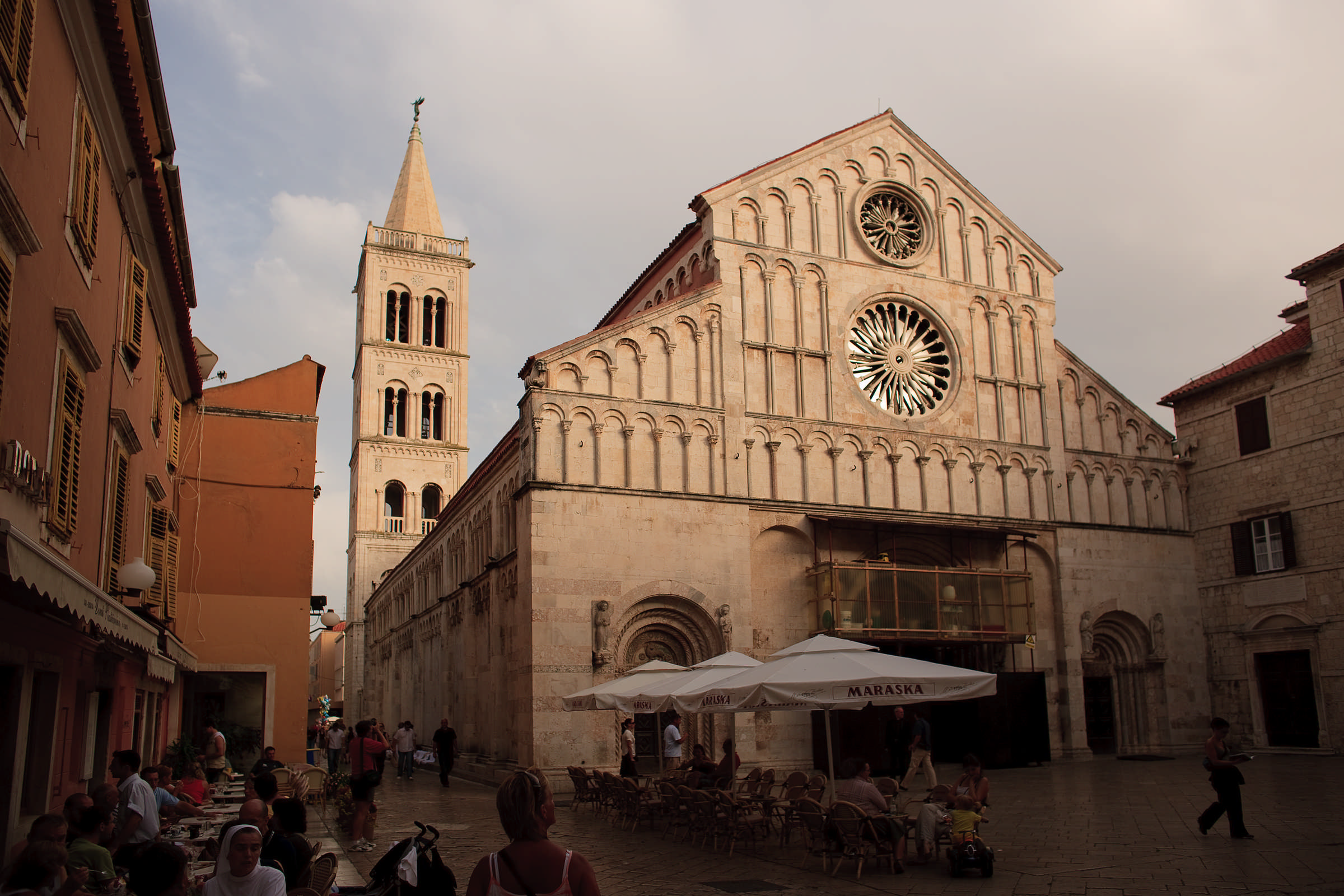 Zadar cathedral by Romulic
Zadar cathedral by Romulic
A few thoughts on Zadar by Noé Bianchi who visited in the 1770s, in his trademark enumeration style:
The city has six gates, a great Arsenal, and many ships and boats. It is a beautiful port, and a place to live in abundance; its territory spans over thirty miles on the mainland, with many castles, islands, and more than four hundred reefs. There are large pastures with plenty of livestock, and an abundance of all sorts of fish; they dress pompously, are very devoted to arms, but above all to humanist studies; they have many schoolmasters, and a lot of merchants.
Let’s hope it was the people of Zadar who dressed pompously and not the fish. Thankfully, we have a new character in our story: countess de La Morinière de La Rochecantin who offers her view of the locals, having visited Zadar in 1907:
The men are not handsome at all; their eyes are hard, their facial features sharp. The women, on the other hand, have a beautiful smile and something seductive under those colourful scarves with which they cover their heads.
Sorry, men of Zadar.
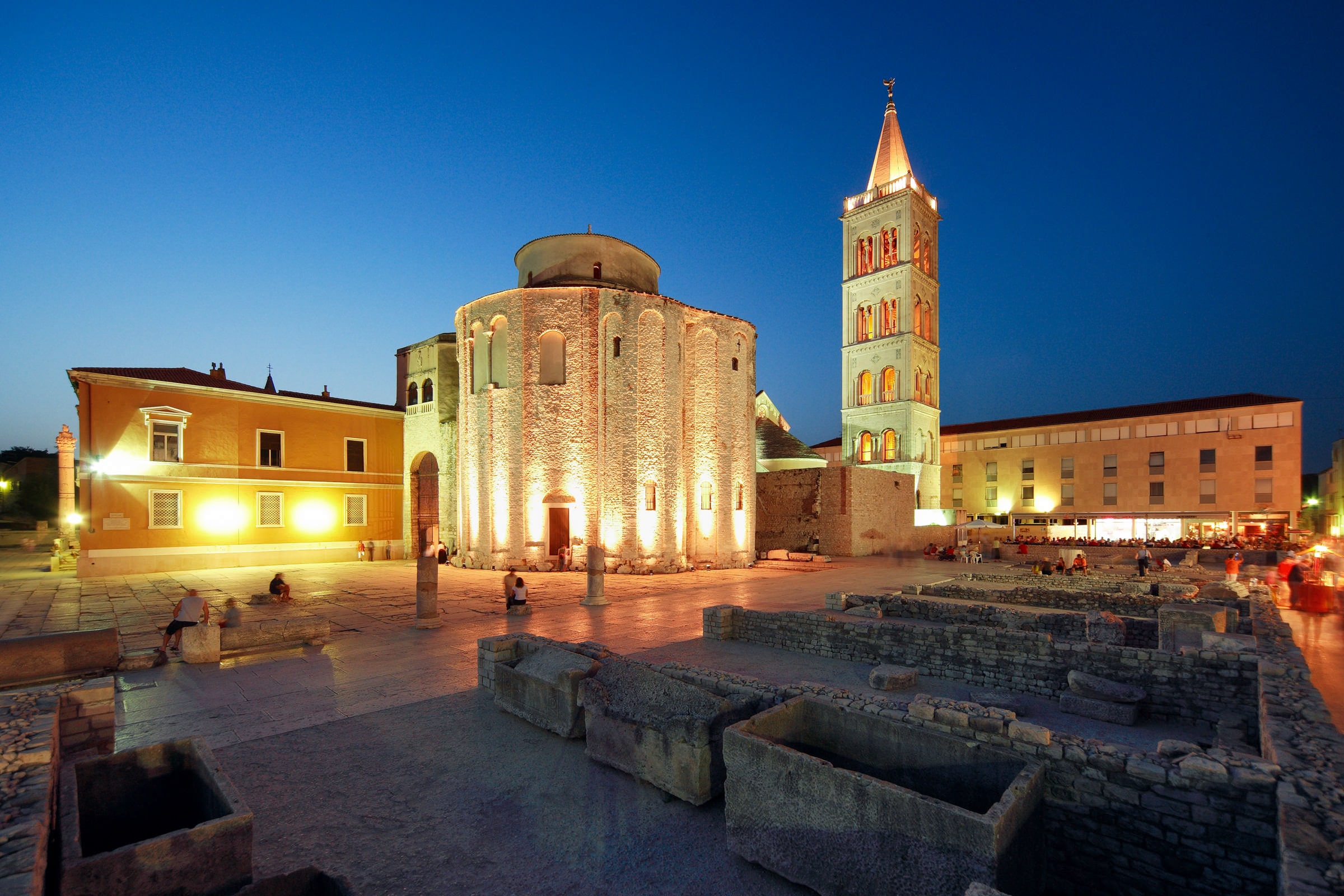 Zadar by Romulic
Zadar by Romulic
***
On we go to Trogir, where the countess notes the following:
The inhabitants are largely similar to those of the Illyrian islands, but this lot is more gentle. They live here in a small Provence. Tamarisk trees and pines, through which a soft wind whistles as if in song, line the narrow paths that run along the shore.
This morning, the water glistens with opal reflections, the air is gentle and warm, but it’s enough for the sky to get veiled in clouds for a feeling of melancholy to take hold of us. In these countries where the sun is king, it alone gives life to beings and things: aromatic plants, trees with pale foliage; the flora of such ardent regions only comes alive and reveals all its splendour and perfumes in the light and under the scorch of the sparkling star.
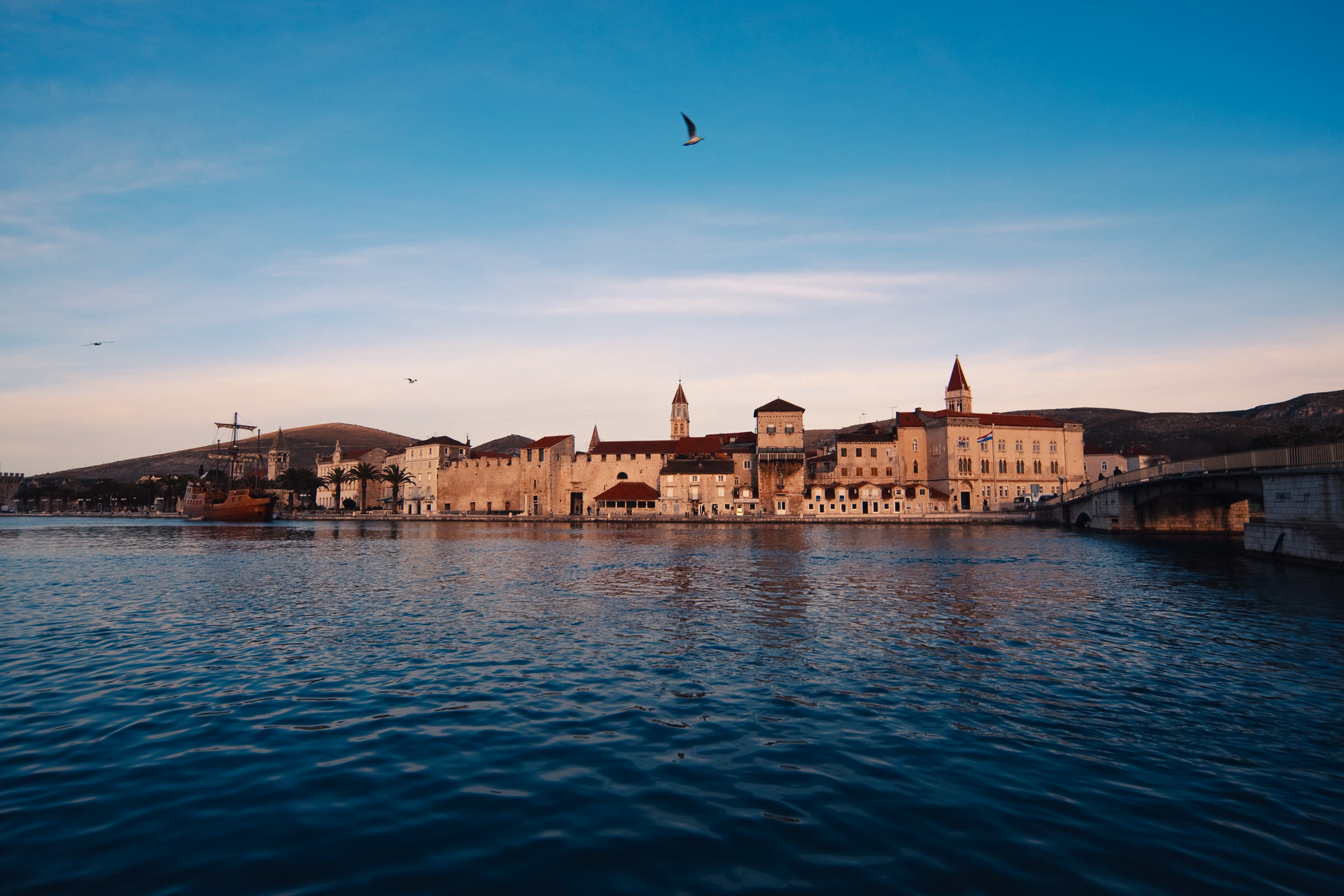 Trogir by Mario Romulic
Trogir by Mario Romulic
Spon on the other hand has a less poetic approach and seems to be excited about Trogir mostly due to it being the birthplace of Ivan Lučić Lucius, a Croatian historian of international renown.
Lucius is known as the father of Croatian historiography owing to his work 'On the Kingdom of Dalmatia and Croatia', in which he gives a comprehensive account of Dalmatia’s history from the Roman times to the end of the 15th century. Seemingly enough to merit admiration from monsieur Spon who, as we’ve learned, wasn’t easily impressed:
This monsieur Lucius is a nobleman from this country whom I had the honour to meet in Rome, where he is now residing. His homeland is indebted to him for having pulled it from the shadows of antiquity with the historic account he made.
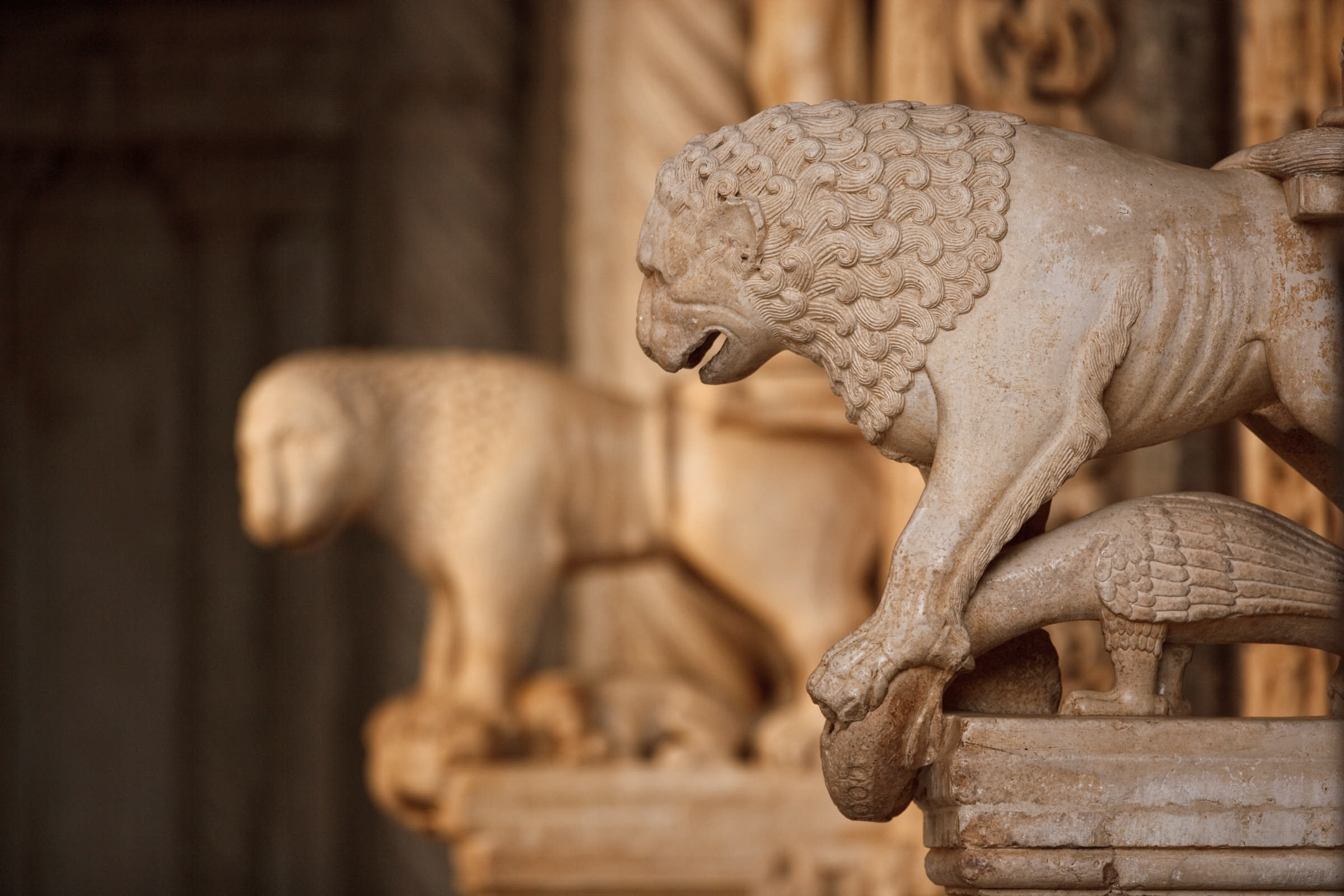 Trogir by Mario Romulic
Trogir by Mario Romulic
Immediately upon arrival, Spon and his party are struck by one of the worst troubles that can happen on a trip: no place to stay!
We had arrived in Trogir at dinner time and were looking for lodging, when we were told that we had to make our own arrangements for dinner, and that it wasn’t customary in that land to deal in hospitality [accommodation].
Naturally, as they were starving at that point, they weren’t exactly happy to hear this, but they got lucky shortly thereafter and found a place in town that sold wine. They were soon ushered into a nearby building that turned out to be none other than Lucius’s palace. This one:
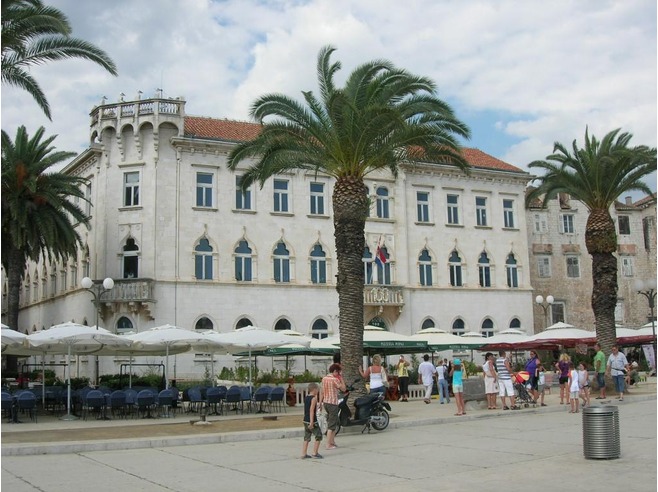
We were surprised to see this house, which is quite beautiful and has a view of the sea, empty and as if deserted, and we were even more surprised when we were told it was the house of this monsieur Lucius whom I just talked about. It has been more than twenty five years since he left it, all because of the incivility of a General of Dalmatia who, having arrived in Trogir, let [Lucius] know he wanted to lodge in his house. The nobleman was getting ready to receive him, and left for himself only a mediocre apartment. But the general immediately sent his people to take all the furniture outside. This impudence annoyed [Lucius] so much, he left the country immediately and never wanted to return.
Loving the gossip. Any thoughts on the sights, though?
The cathedral isn’t ugly. There are some statues in the church, made by a fairly good hand.
Today, the historic centre of Trogir, including the cathedral of St Lawrence, is a UNESCO World Heritage Site.
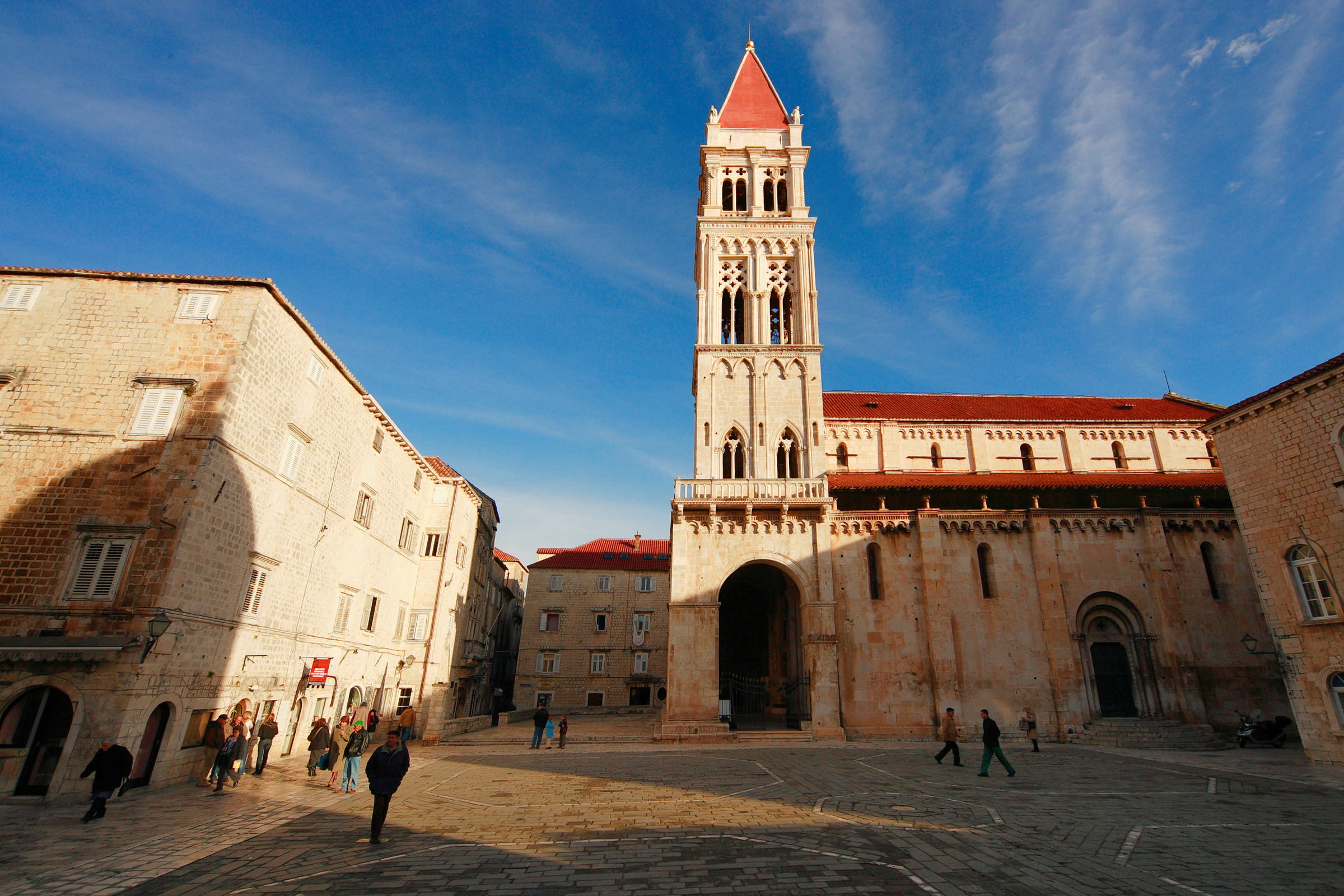 Trogir by Mario Romulic
Trogir by Mario Romulic
We have another appearance by Alberto Fortis who shares a warning: don’t get scammed on your travels! After two pages of musings on marble and its various properties, he says:
As I searched in vain around Trogir to find the famed marble, someone showed up who wanted to abuse my lack of guile by presenting me with a piece of Carrara marble as if it were taken from the nearby hill of St Elijah, where you can find old quarries whose marble isn’t rough at all, but is still far from the refined marble of Carrara.
No one's taking Fortis for a fool!
A traveller must always keep their guard up, as I have, before they draw conclusions based on other people’s claims. I.e., they should go directly to the site in question or at least threaten to do so in spite of all difficulties; that is how you uncover lies.
A marble-related crisis isn’t a situation a lot of us are likely to find ourselves in these days, but fine advice nonetheless.
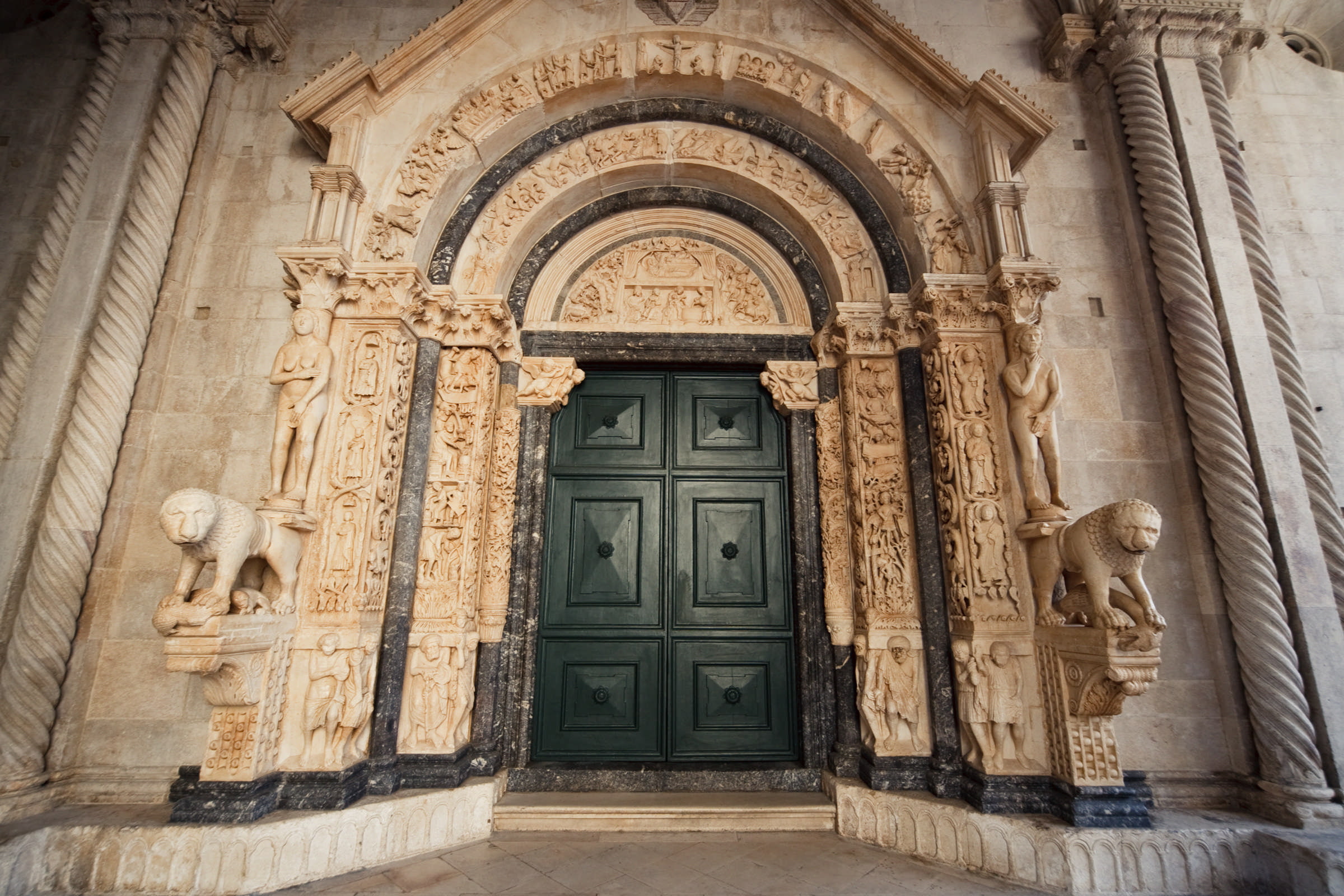 The portal of Trogir cathedral by Mario Romulic
The portal of Trogir cathedral by Mario Romulic
He adds a few favourable impressions of Čiovo island:
The island’s climate is truly very pleasant, the air perfect, oil, grapes and fruit excellent, the sea rich in fish, the port spacious and shielded. And its surface isn’t so small that a nobleman couldn’t comfortably walk or ride around it.
Good to know.
***
Before we go on to Split, a note on the hinterland by Marcotti, an Italian writer visiting in the late 1890s:
Those who want to be more in control of their time while travelling in the Dalmatian hinterland will prefer to travel by horse, but will have to get accustomed to a common lack of comfort in regards to accommodation and food: pecorino cheese, stale bread; plum brandy to drink. Corn polenta, ham, roasted lamb, smoked mutton and wine are items of luxury.
***
I believe we’re all familiar enough with the splendour of the Diocletian’s palace in Split to skip the lengthy elegies about its magnificence. Instead, let’s see a few impressions of the town in general, starting with Marcotti:
The market is especially crowded on Monday and Thursday mornings. It is interesting to see how peasants and people from the outskirts of town are dressed: bright colours (blue, red and black), large pieces of jewellery, filigree, gold and silver buttons, chains, medals. Compared with the Morlach women, the women of Kaštela stand out with their elegance.
The countess gets philosophical:
A rosy and curly child, with a serious expression of a grown man, leads us through narrow streets in the ruins of the palace. There is something moving about this loyalty that leads men to live where their ancestors lived, be it within the crumbling walls of an ancient palace or next to a dormant crater that will sooner or later sow devastation and death around it.
![]()
And Spon was surprisingly won over by Split, having spent ten days not doing much other than sampling the local cuisine:
The time we spent in Split did not last us long, because we discovered something new every day and besides, the food was very good. The only downside was accommodation which was not very convenient, as we found but four bare walls.
Partridge only costs five sols there, and hare doesn’t cost much more. There is meat at the butcher’s for one sol a pound, and turtles the size of two fists for four or five sols. But more often than not we preferred to abstain from meat and eat those little trouts from Salona, of which Emperor Diocletian was so fond, that for fear of running out of them he had an express conduit made which brought them to his palace.
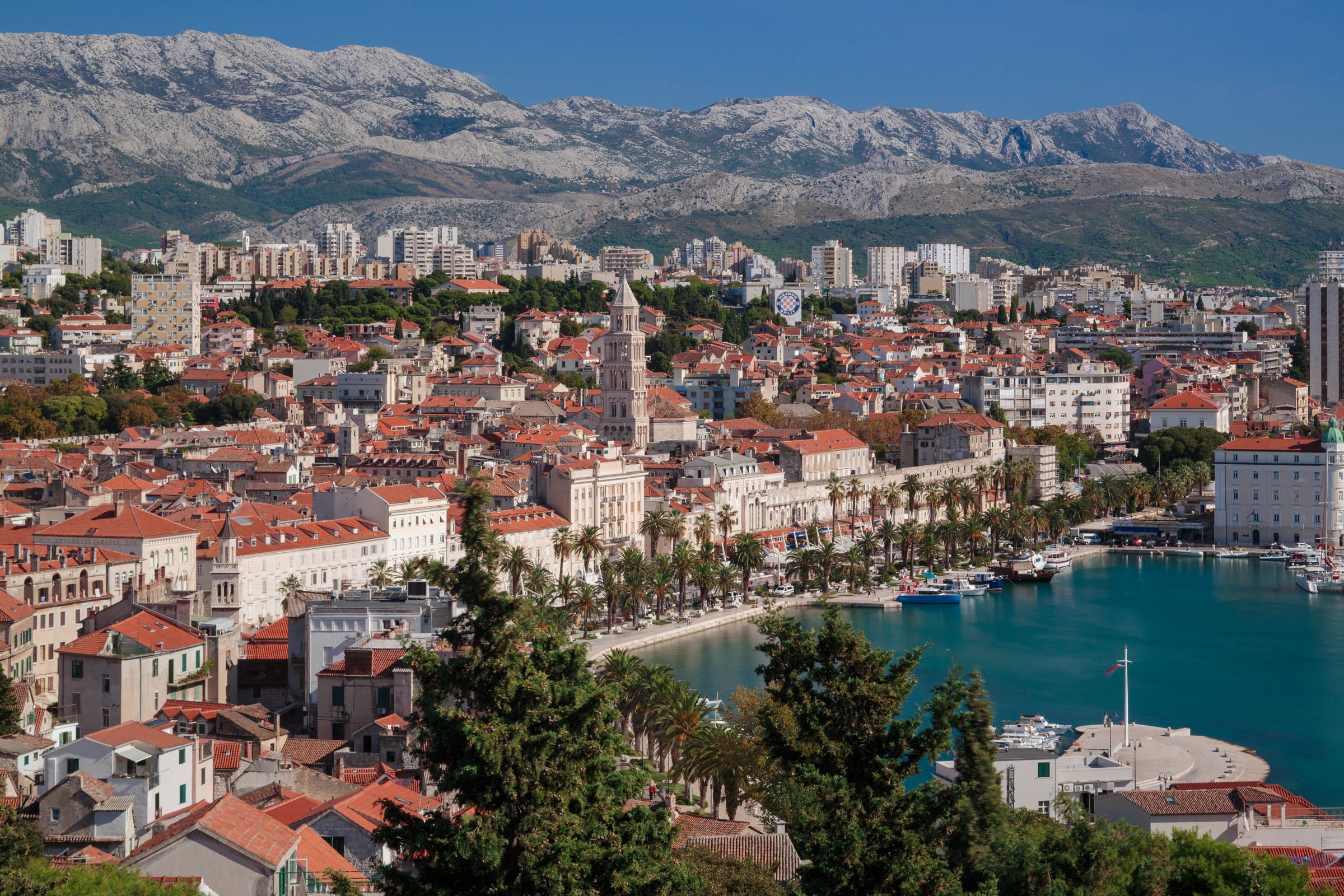 Split by Mario Romulic
Split by Mario Romulic
All of our brave travellers then went to see Klis. Marcotti offers some practical information:
From Split via Klis (2 hours) to Sinj (5 hours), superb road, but the postal service only operates twice a week. A permit from the commander’s office in Split is needed to visit the Klis fortress; it is not granted to ladies.
Rude.
It would take long to recall the whole of its glorious military history, he says about the fortress, then recalls it anyway. A history lesson later, he goes on to say:
The road, the gates, the barracks, they’re all modern; but the walls, the towers, the ramparts, all retain the picturesque charm of ancient military gear: the mosque was transformed into a warehouse. And there’s a beautiful view to boot. In the village, nestled on terraces below the fort, are several taverns.
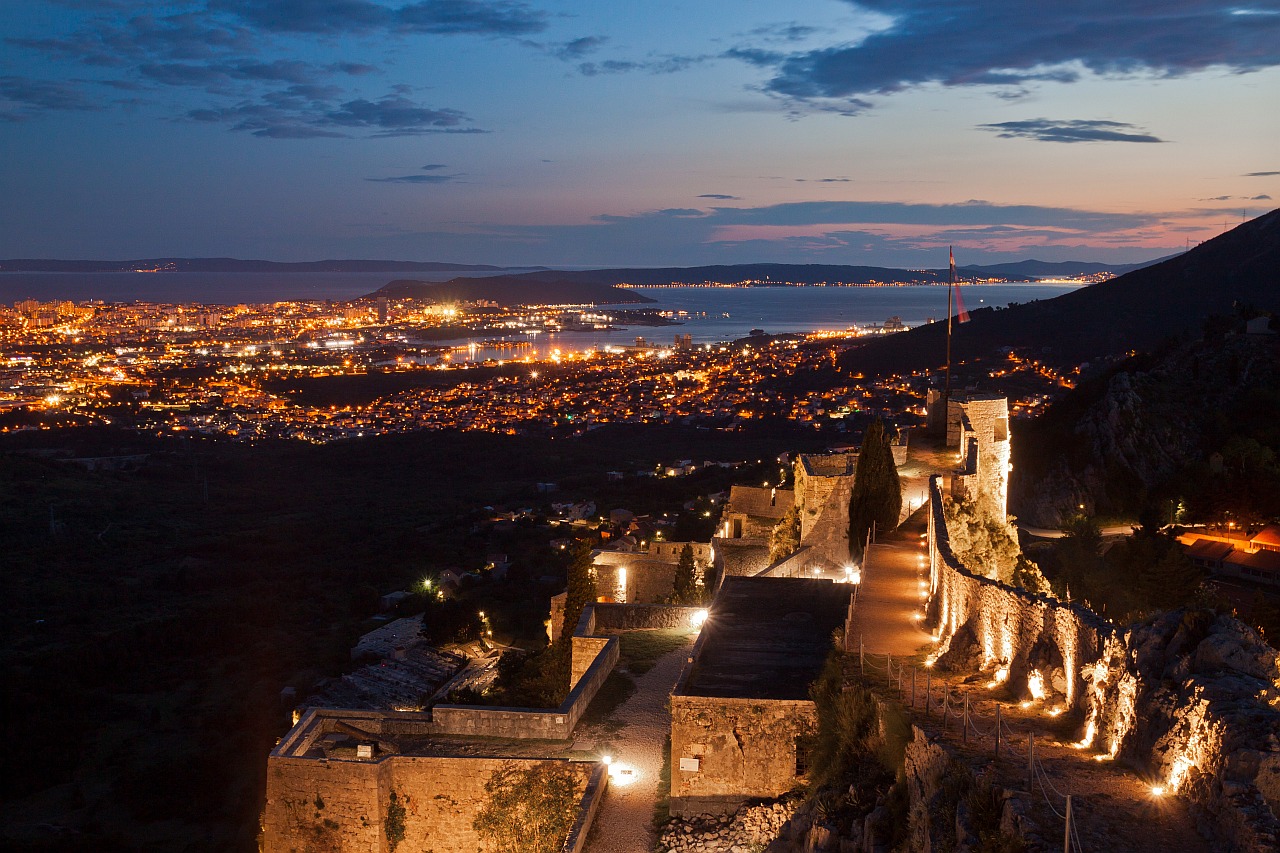 Kliss fortress
Kliss fortress
Countess Rochecantin:
The citadel of Klis, truly an eagle's nest which proudly dominates the valley. The rock it’s built on is surrounded by peaks which would seem inaccessible, if it wasn’t for little pockets of greenery bearing witness to the patient conquest of man over this rugged nature.
And then there’s Spon, bless his heart:
There’s a lack of water and it gets terribly cold in winter. I imagine it’s a harsh penance for a Venetian nobleman to serve here as an officer for two years. 2/10
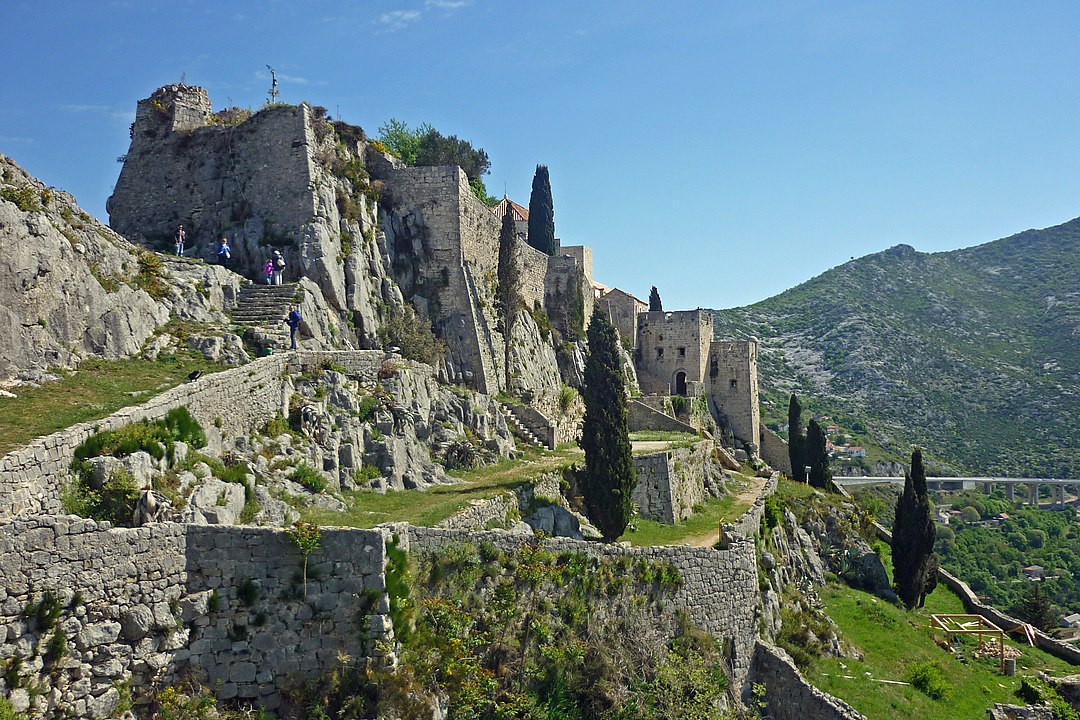 Kliss fortress
Kliss fortress
Marcotti offers a few pointers for towns and islands in the area:
At the mouth of the river Cetina, between Mount Biokovo and the sea is Omiš, a formidable ancient pirate nest. Ruins of the Mirabela and one other castle: excellent wines, pink muscat, even some dessert sparkling wines.
The man truly tells us what we want to know the most.
Šolta isn’t big: its chief town Grohote only has 1200 inhabitants. It’s been renowned for its honey since ancient times; the bees only suckle on rosemary.
Brač is the most important Dalmatian island, in terms of size, population and wealth. They produce vugava, an excellent prošek wine. (...) In the village Pučišće are quarries where stone was sourced for Diocletian’s grand construction in Split.
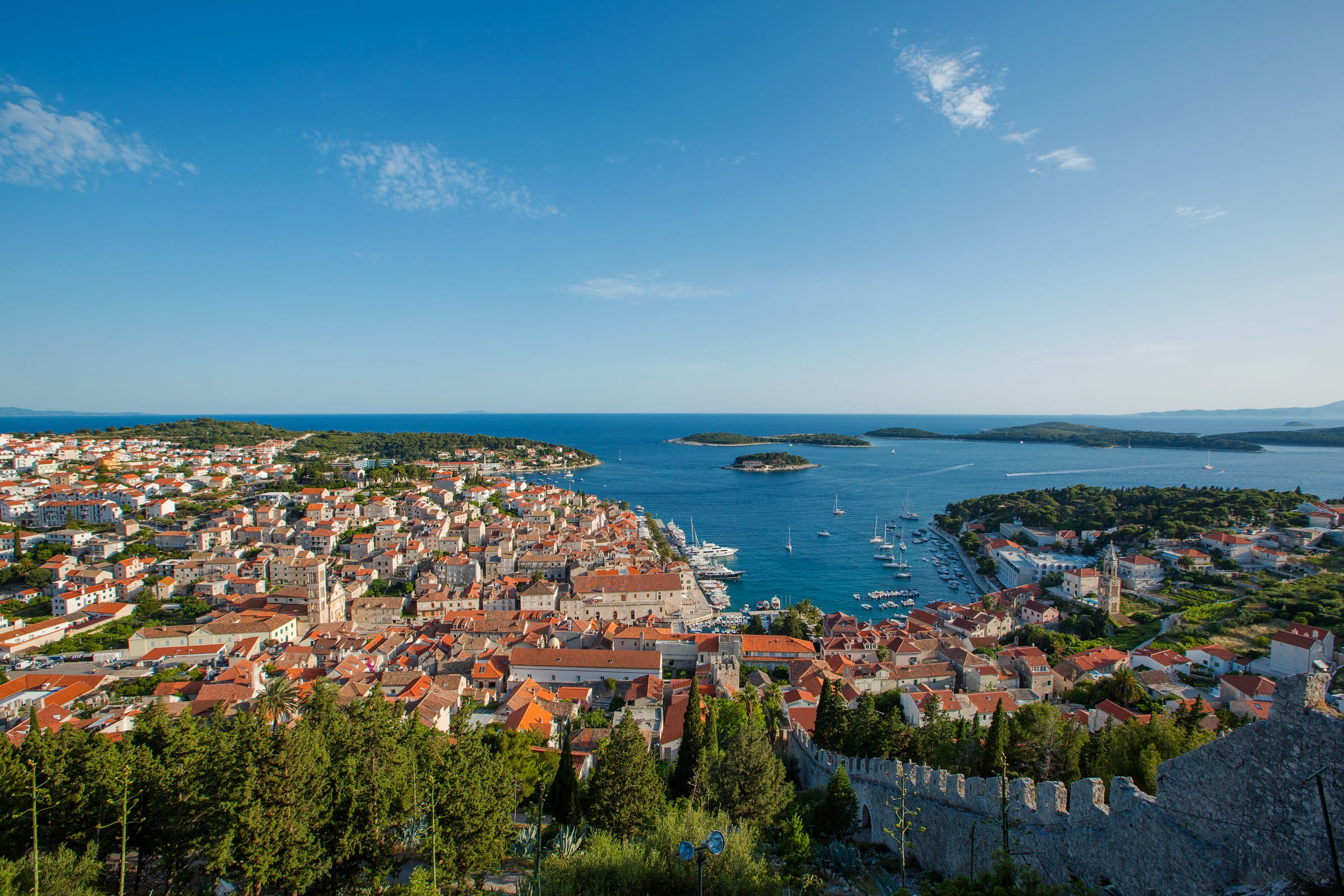 Hvar town by Mario Romulic
Hvar town by Mario Romulic
Hvar: shielded from bura wind by the island’s hills, and from sirocco wind by Pakleni islands, it enjoys a well-deserved reputation as a very favourable climate. Cypress, agave, carob and palm trees thrive there magnificently.
A particular thought stands out in this paragraph. At the time of his visit in the late 19th century, organised tourism was already in development in Croatia, notably in two destinations both mentioned here. Marcotti says:
If direct lines by sea between Italy and Dalmatia were properly established, Hvar town would be a highly recommendable winter destination for the Adriatic regions of the Kingdom, incomparably preferable to Opatija.
According to Spon, Hvar town was an inviting place even two hundred years earlier:
The people of the island, who are three or four thousand in number, have all withdrawn to the town of the same name so they can watch foreigners occasionally dock in their port. So they could receive them with more dignity, they have made there a beautiful pier of marble and stone blocks which lines the semi-circular port.
There is very good bread and very good wine, and plenty of sardines to whet the appetite, with which they also supply Italy and Greece.
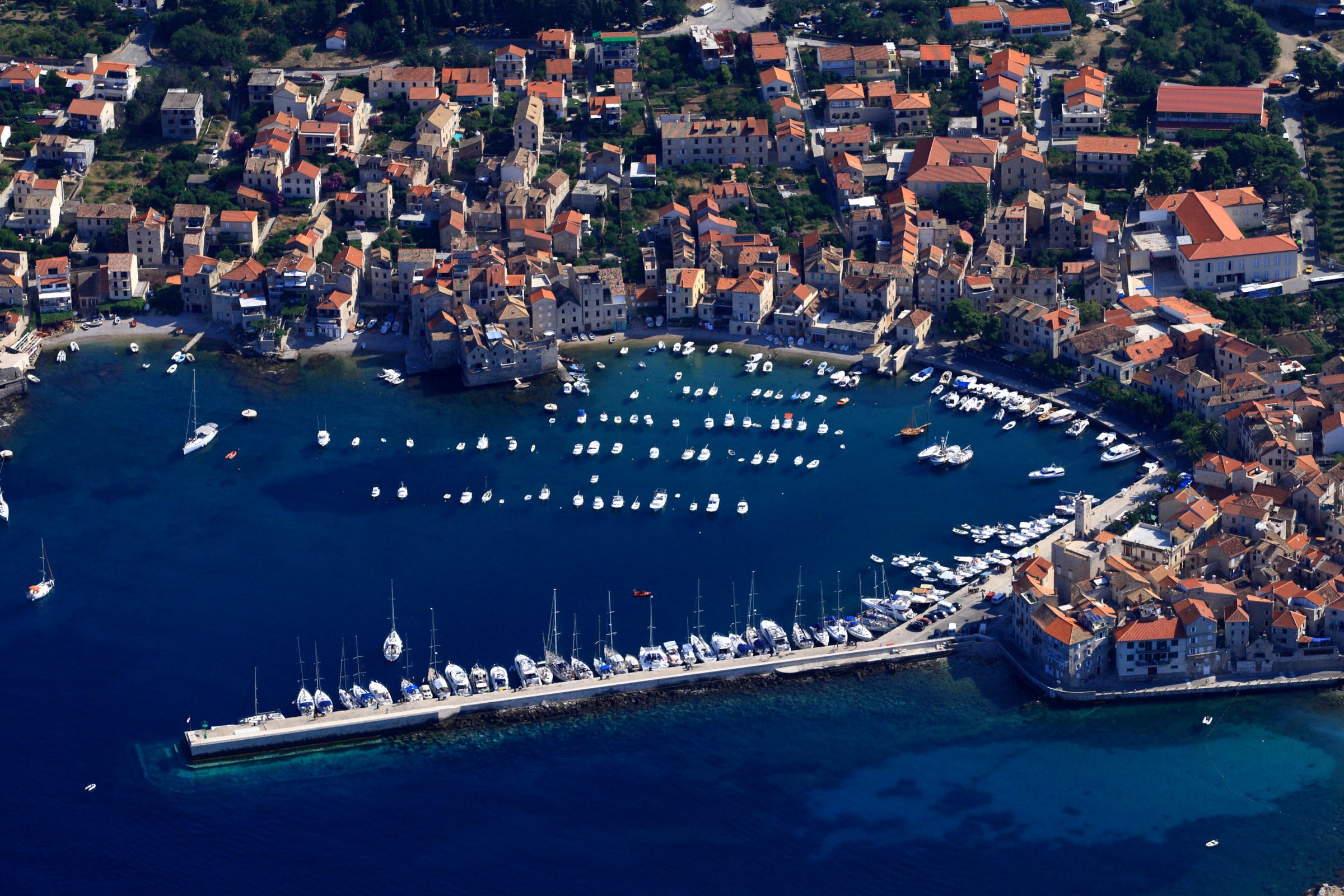 Komiža on Vis island by Mario Romulic
Komiža on Vis island by Mario Romulic
Vis: The island’s vegetation has a distinct southern character, with almond trees, figs, and palm trees. Some excellent wines are the opollo, the Margherita, the prosecco, the gripola, as well as vinegar and brandy. Sardines are abundant in Komiža; anchovies, mackerel, sea bream and snapper are found in all the waters around the island. The suckling lambs are delicious owing to the aromatic pastures of rosemary.
Spon also visited Vis island, but wasn't impressed with the sights:
I won't talk about the fortress, it's just a crow's nest that could be knocked down with ease from the nearby rocks. In the whole garrison there is but one simple soldier who performs the roles of Captain, Sargent and Porter, much like that of Plautus.
He goes to Korčula next, where he learns about jackals:
As this island is covered in woods, it is a haven for several wild beasts. Among them is a certain animal which I am told is built like a dog, but has the cry of a cat or a peacock. If one lights a fire at night near these woods, one can hear a great number of them shrieking and chanting their rabid song, such that those who have never heard them before mistake them for people yelling. It is also said that they dig up the dead to feed on them, and they are good for naught else, but to make some horrid furs out of them.
Next up: Dubrovnik, plus a few places we missed on our way south!
Sources for part II:
Jacob Spon, Voyage de l'Italie, de Dalmatie, de Grece, et du Levant, Fait és années 1675. & 1676., Tome I (Antoine Cellier le fils, Lyon, 1678)
Noé Bianchi, Viaggio da Venezia al S. sepolcro, et al monte Sinai (Remondini, Bassano, 1770)
Giuseppe Marcotti, L’Adriatico Orientale, da Venezia a Corfu (1899)
Alberto Fortis, Viaggio a Dalmazia, 1774 (Croatian edition: Put po Dalmaciji, Globus, Zagreb, 1984)
Comtesse de La Morinière de La Rochecantin, Croisière en Adriatique et en Méditerranée (1907)
Quotes translated from Croatian, Italian and French by the author of the article.
Environmental Awareness Event Held in Split
ZAGREB, 5 Feb 2022 - An event organised by the Economy and Sustainable Development Ministry to advocate a change of habits and encourage the reduction of humans' harmful impact on climate, nature and the environment, took place in Split's Prokurative Square on Saturday.
Local artisans - shoemakers, tailors, watchmakers, opticians, repairers of household appliances, locksmiths, knife grinders and others made minor repairs free of charge to objects brought by citizens.
The event, attended by Minister Tomislav Ćorić and Mayor Ivica Puljak, is part of the ministry's campaign #ZaZeleniSvakiDan, which has been going on since 2021 and which aims to show citizens that changing one's daily habits and reusing objects helps to preserve nature and have more available resources for future generations.
Ćorić and his associates also visited the city's open-air farmers' market, where they distributed to citizens bags made of recycled plastic and cloth bags.
The minister underlined that there was a growing awareness among citizens of the need to sort and recycle waste and avoid behaviour that causes environmental pollution.
Mayor Puljak said that the city administration would help local artisans with subsidies.
The head of the city association of artisans, Vilim Bujević, said that there were 4,500 craftspeople in Split, expressing hope the city authorities would support them.
For more, check out our lifestyle section.
Shoowa: German-Congolese Designer Runs Eco-fashion Business from Split
February 4, 2022 - TCN contributor Ivan Rubil introduces Shoowa, unique Kuba cloth products from the Congo Basin, created by German-Congolese designer Malaika Paulini in Split.
Our planet has been growing more dynamic with each new idea. While some of them stay inside provisional boundaries of business and culture, others are by nature seeking to explore, connect and bring joy. One of these ideas was launched by a German-Congolese funky designer named Malaika Paulini and has now landed in “the most beautiful city in the world” - Split, Croatia.
Her project SHOOWA ( www.shoowa.eu ) revolves around redesigning traditional Kuba cloth that comes straight from the Congo Basin. A distinct trait of the project is giving-back, donating a proportion of the profits to empowerment programs in the Democratic Republic of the Congo. The result is a cyclical fashion enterprise, rooted in sustainable and recyclable material - a revolution in its precise sense.
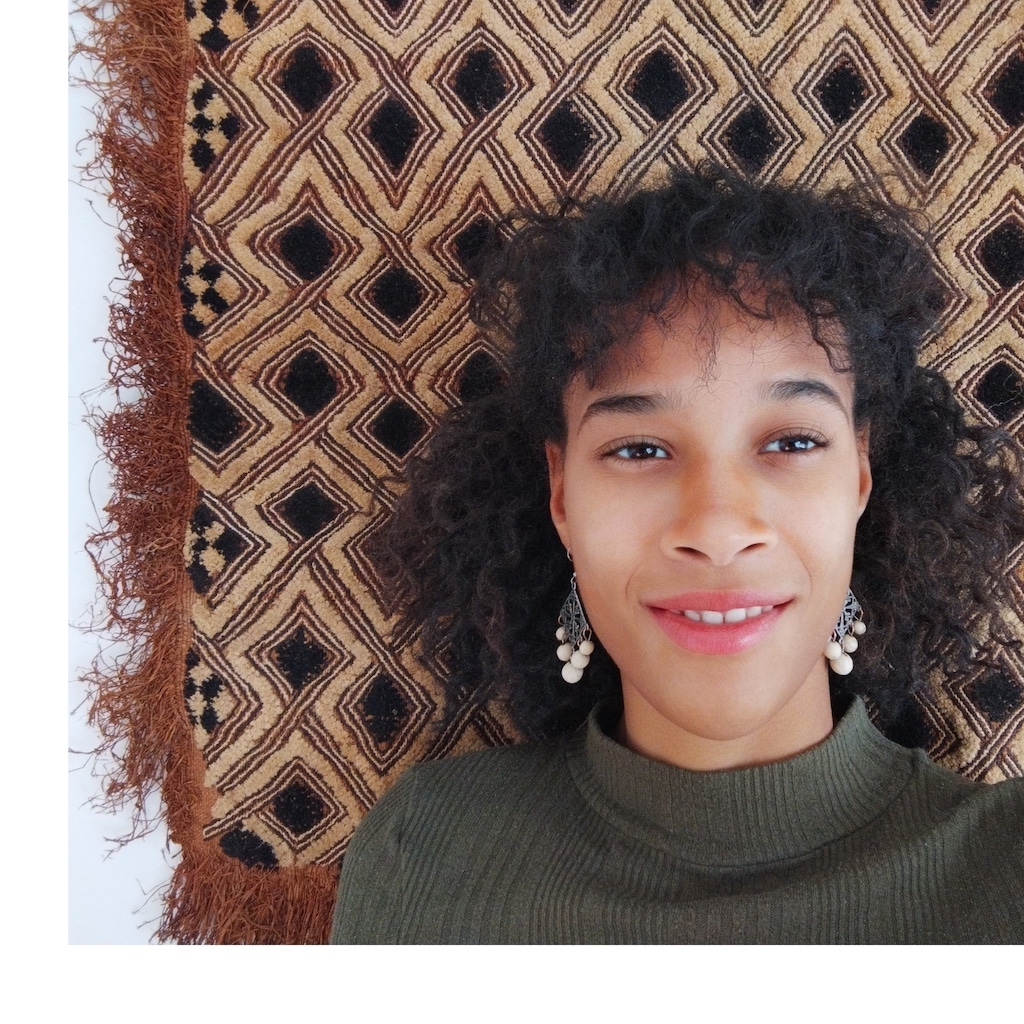
Since childhood, Malaika has connected with her Congolese heritage as if it were through an internet modem of the 1990s. She listened to her father’s stories about the Congo and cherished memories from her visit there when she was a teenager. Deciding to have that connection become broadband, she returned to the DRC with a vision. She had discovered the existence of Kuba textile, the elaborate and geometrically complex cloth of the Congolese Kuba culture.
“One of the branches of Kuba textile comes from the Shoowa tribes, who mastered the cut-pile embroidery technique,” she tells me as my fingertips encounter this firm fiber. It is an intriguing fabric by its production - traditionally requiring all-gender engagement, coming from a sustainable source of the replenishable raffia palm. In it, the designer sees “an unfolding process that folds back in full circle, being considerate to the producer, the consumer and the material.”
A set of eyes will certainly be struck with the suggestion that a palm leaf has metamorphosized into this intricate pattern, reminiscent of Picasso’s geometry. “Quite a visible connection, isn’t it?”, she replies, “alongside Henri Matisse, Picasso found inspiration in Congolese artcraft. There is real brotherhood in how abstract structure is stressed both in Cubism and in the Shoowa.”
Observing the plethora of the Shoowa patterns truly stretches the possibilities of geometry. The patterns possess a fractal quality by nature - each being a testament to the expressed imagination of its creator. “I’ve gone through thousands of patterns and still haven’t seen two for which I’d say are alike. It’s such a driving force for me to know that each piece of the Shoowa cloth is unique and unrepeatable," she says.
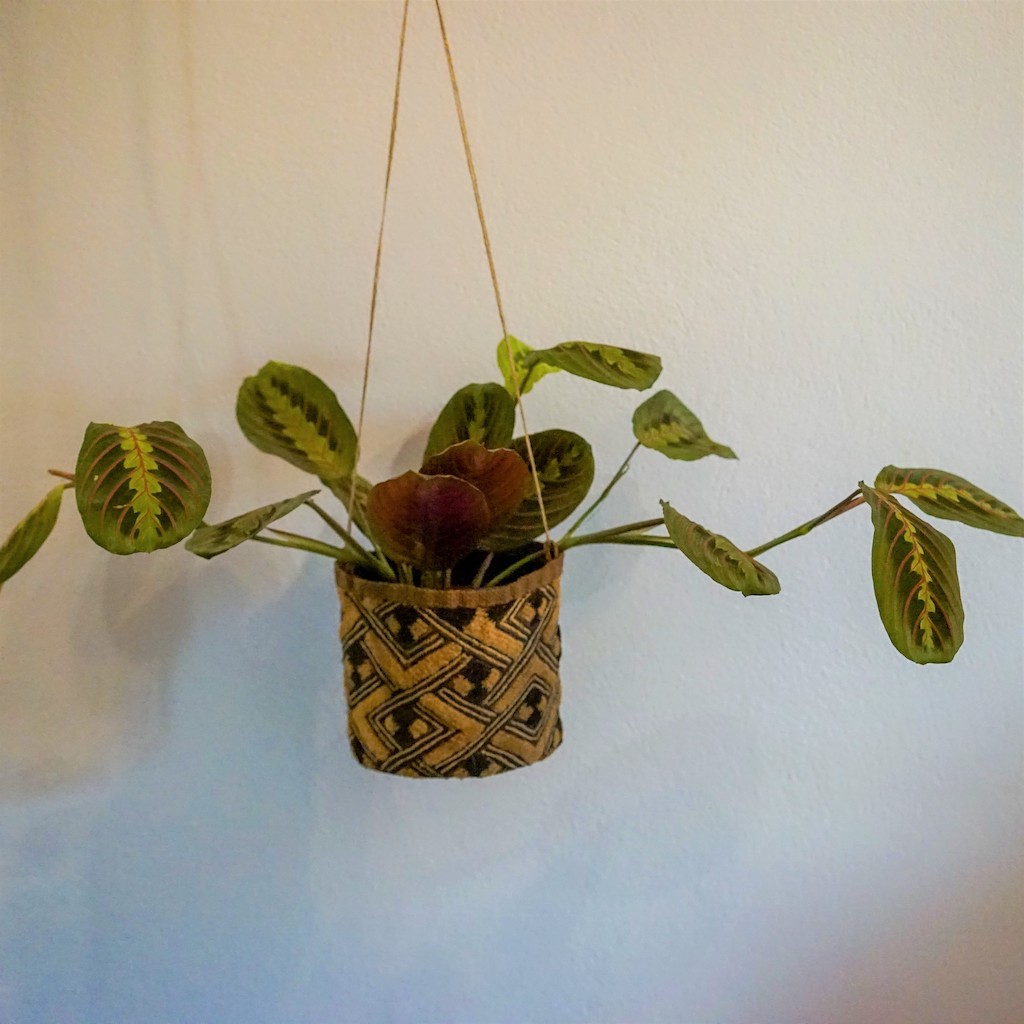
Zooming out of the patterns, Malaika is reminded of the warmth of the Dalmatian sun. She moved to Croatia in early 2021 to pursue her business project. It’s quite rare to encounter a German expat working in Croatia, as the dominant migratory destination in this international relationship is Germany.
She says about moving to Croatia: “This is such a tranquil place for working. I’ve decided to bring the fabric here to be closer to a friend who’s teaching me how to do advanced sewing. After work, there’s an immediate reward in the form of a sunny day. I hope I can grow my business so I can have the same reward in the Congo one day.”

Ante Matas
“People from Southeastern Europe are large and visible demographic groups in Germany. I knew this was a beautiful country with a warm coast, but I also knew Croatians' doubts about career opportunities here. However, I have stumbled upon dozens of small, creative businesses in Croatia and Split that radiate liveliness. I’ve even contacted a few for collaboration, for which I’m always open. I think Croatia is now a place of well-spoken English and of educated young people. It seems to me there’s more than hope here that the country will prosper in the future," she concludes.
Croatia is often perceived as a homogeneous country, with over 95% of the population declaring themselves as ethnically Croatian. So it’s fair to say that Malaika is noticeable as she roams the Split streets devoid of visitors due to the Covid-19 pandemic. She isn’t a visitor anymore, but a resident. A question lingers which some would rather avoid, but many would like to know - does she feel welcome here?
“I rarely feel I’m being singled out. I have experienced a few comments I felt were beneath people’s dignity. However, for each of those specks, there has been a whole Adriatic sea of kindness towards me. Some people are indeed surprised to see me, but in general, I think Croatians are far more mature in communicating with foreigners than they sometimes think they are. For me, there is a definite sense of normalcy and calm here.”
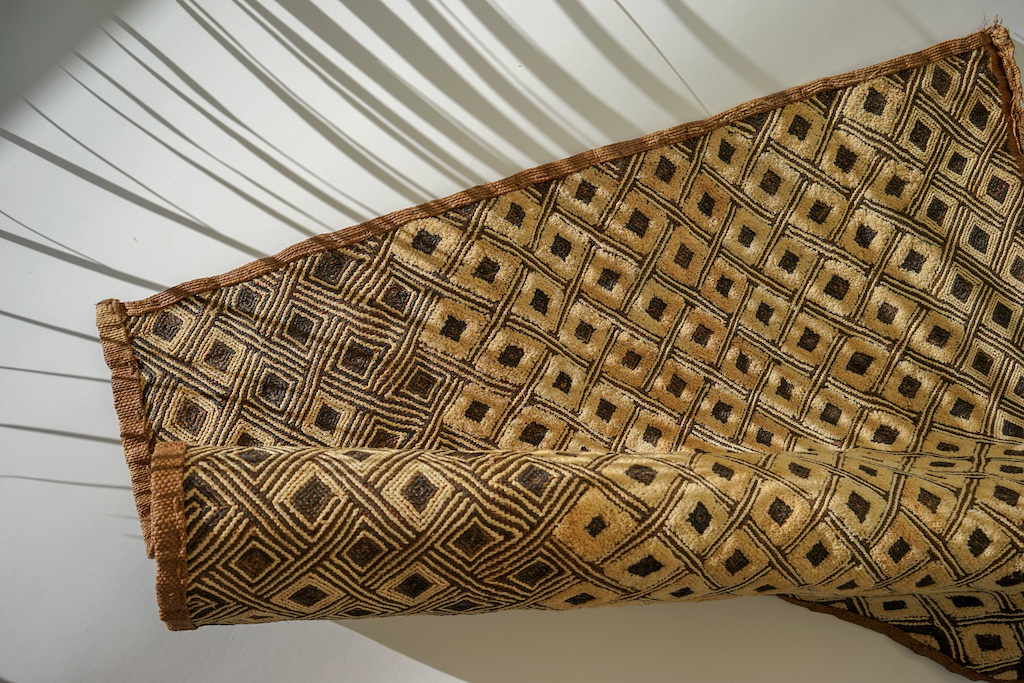
“This is a joy-owned business founded and managed by a Black woman," she replies when asked about herself as a founder of a Black-owned business, “My focus is on promoting the sustainability of African handcraft. Our European societies are now trying to build a sustainable future, and I feel we have to be inspired and learn from our world’s traditions. That’s what I want people to think of when they think of Africa in the future. Shoowa has a role in this endeavor.”
The Congo, Germany, and Croatia. A catalyst can connect these seemingly distant cultures in one place, one idea, even sew them into one and the same fabric. The catalysts - it is us. One day, people might conclude we have been of the same fabric since the beginning.
Author: Ivan Rubil
For more, check out our lifestyle section.


